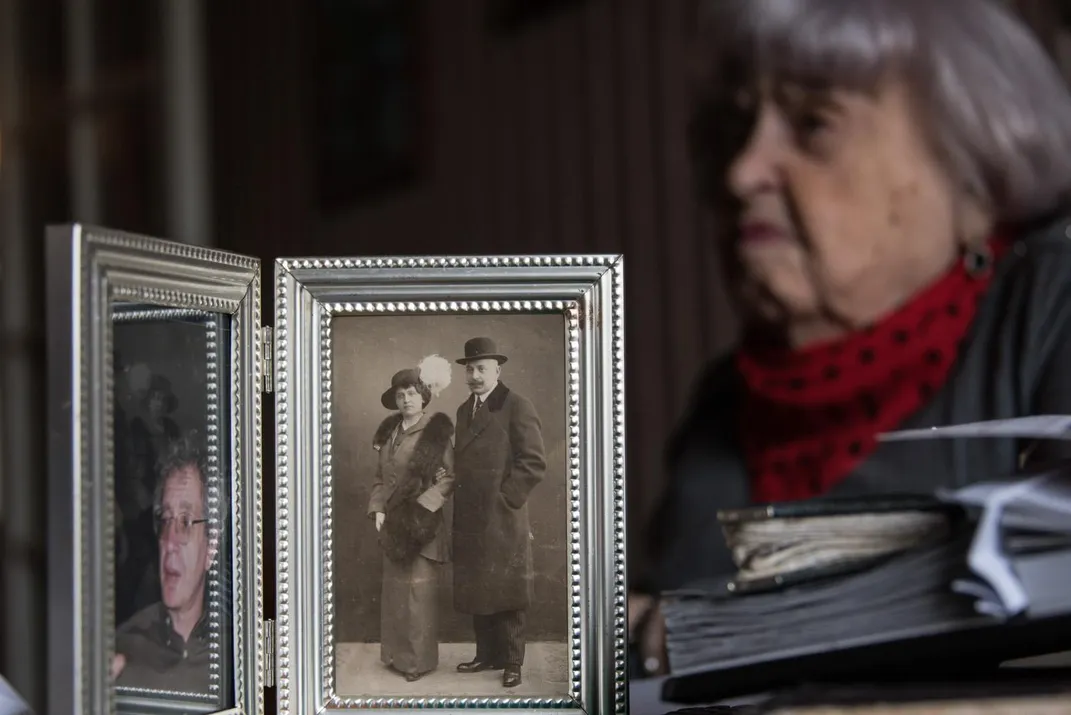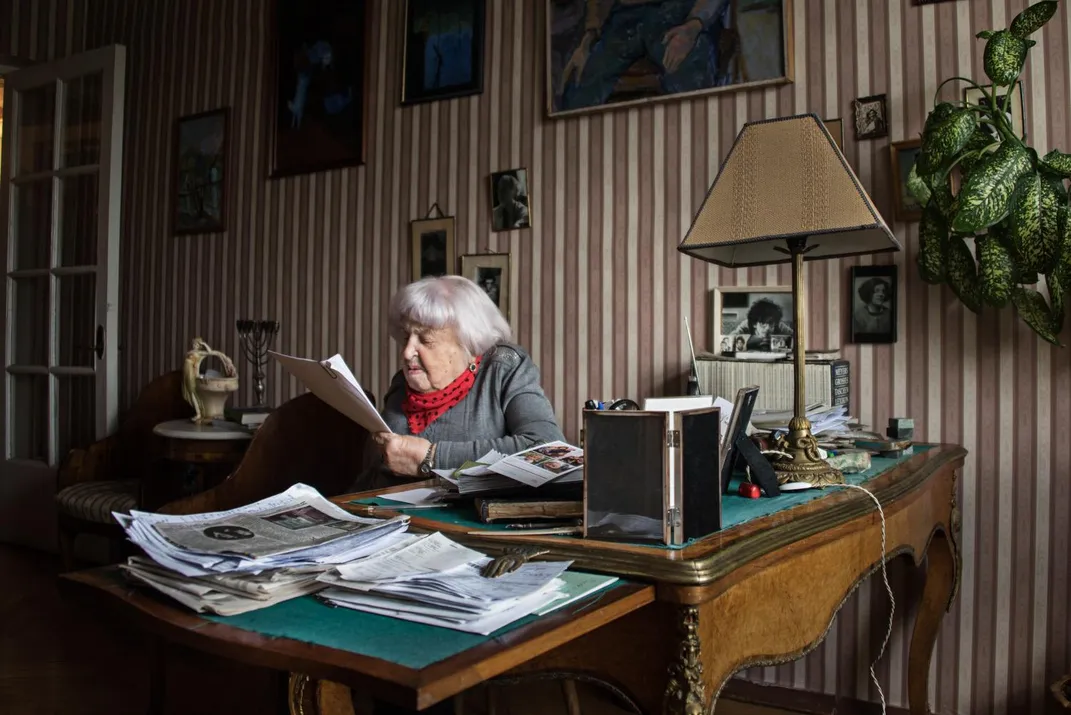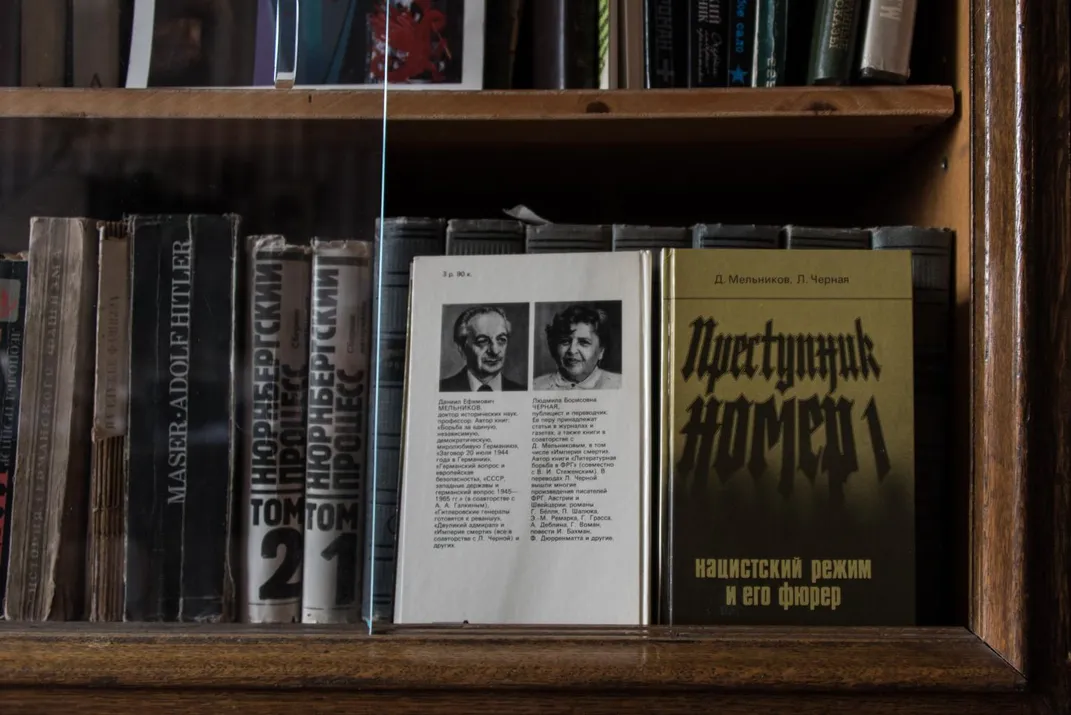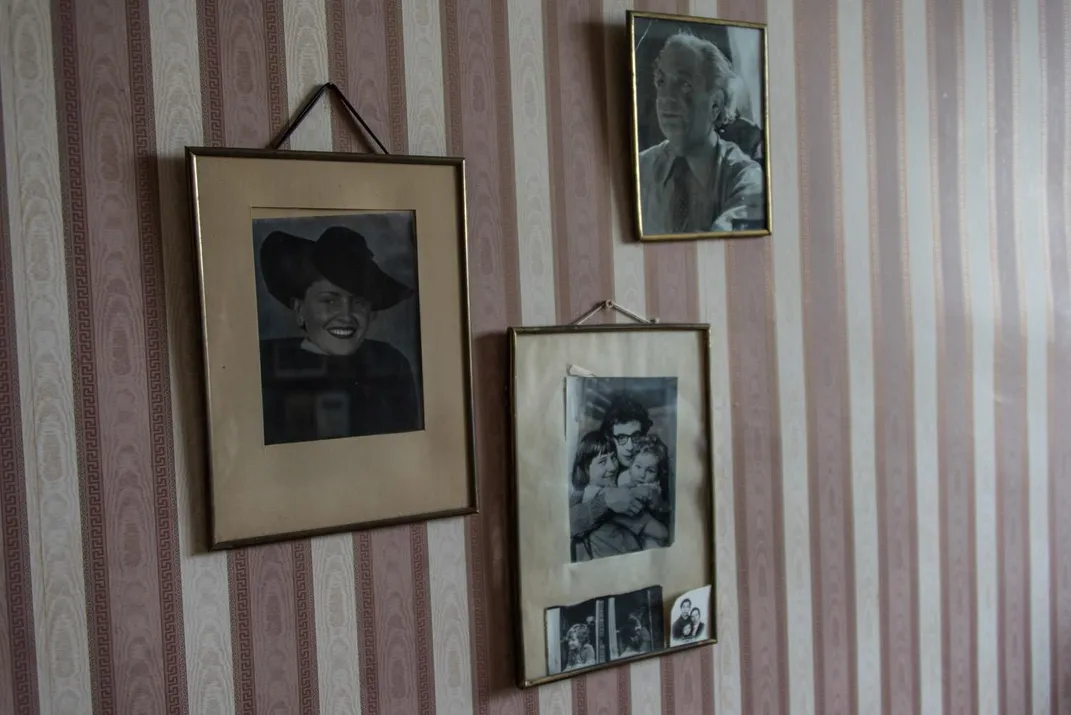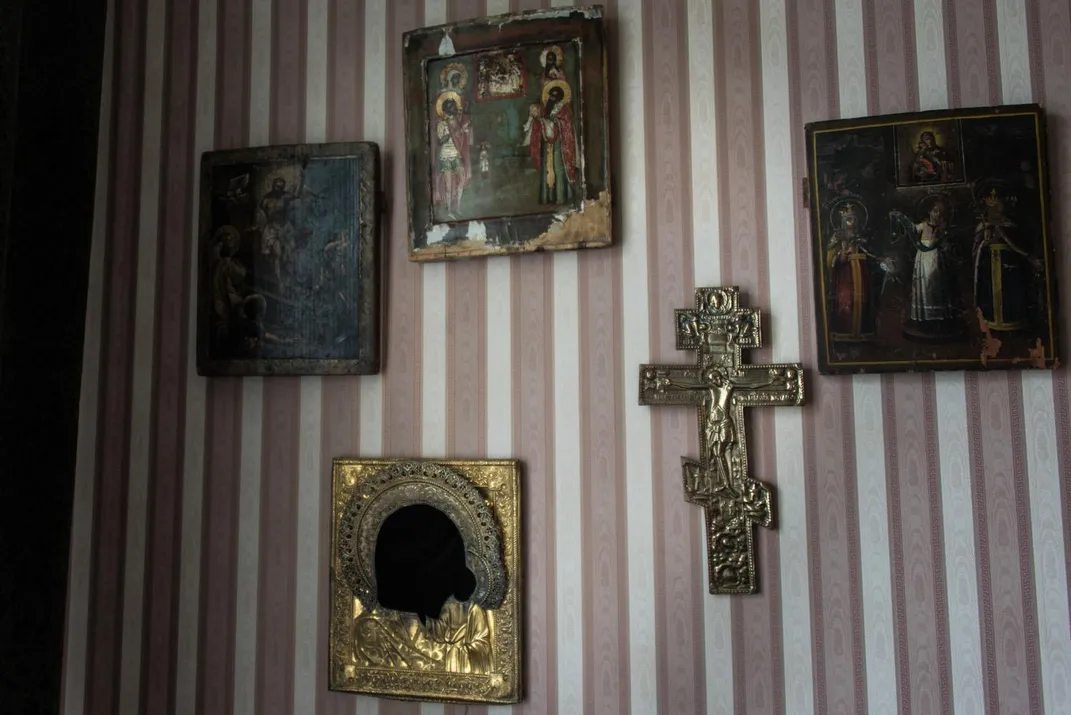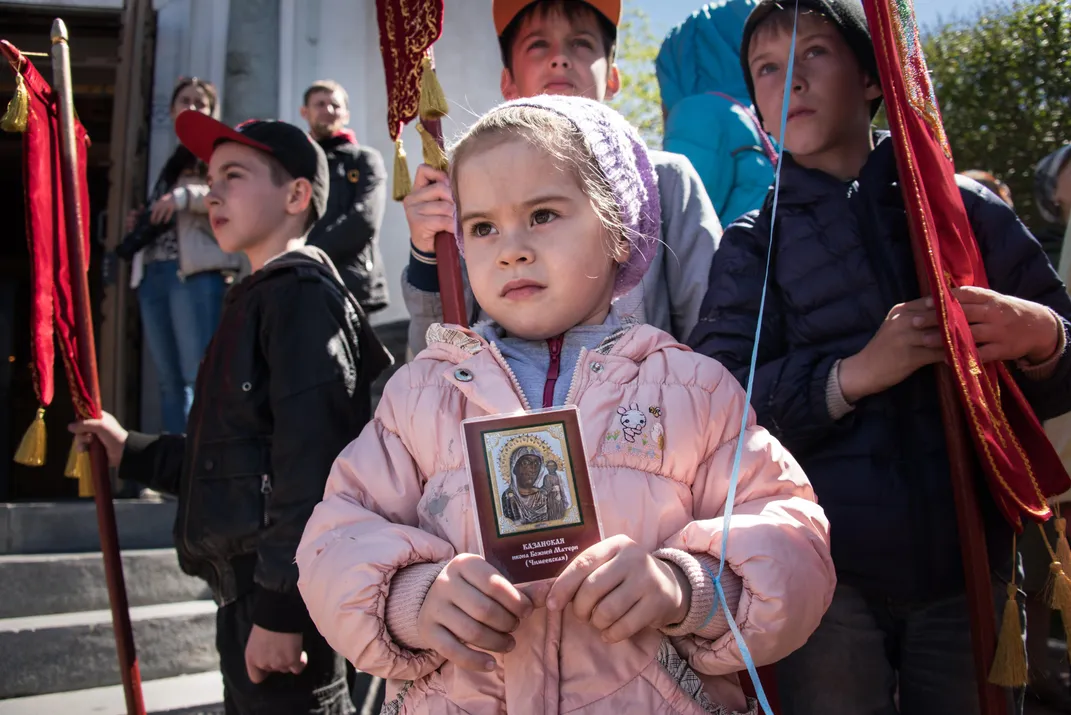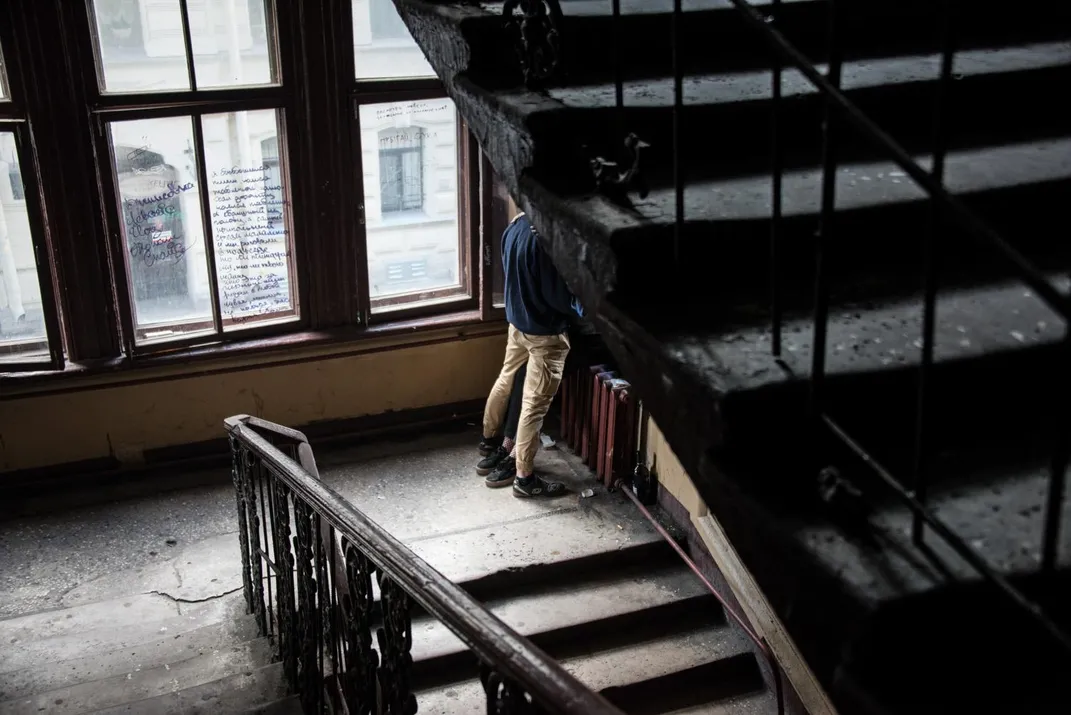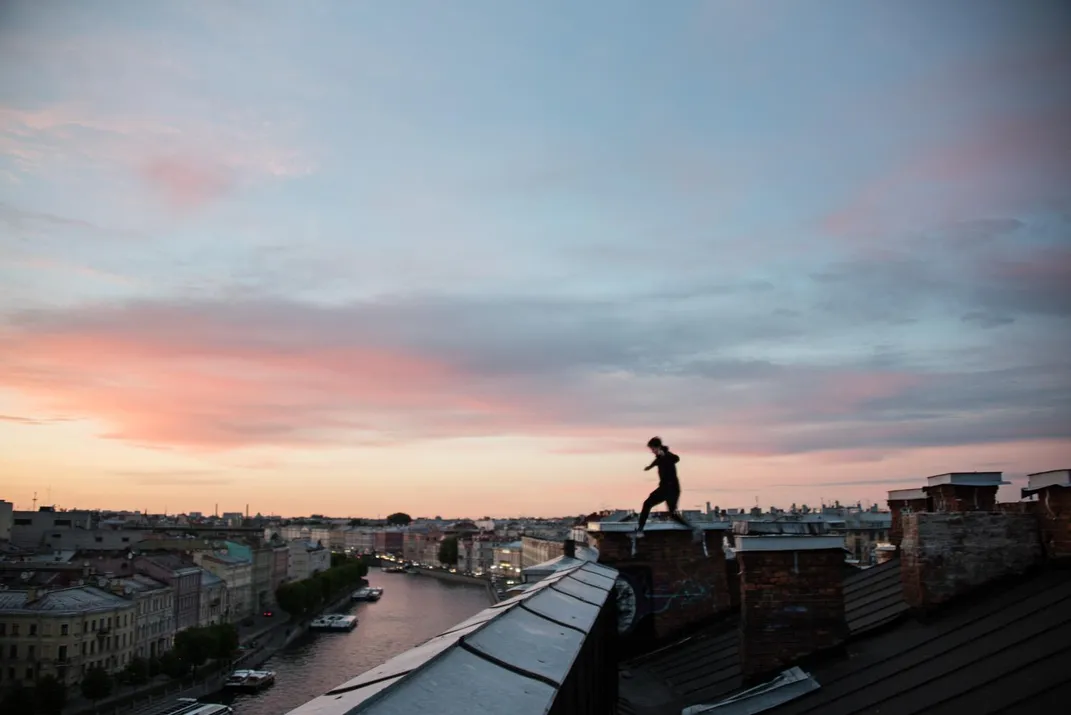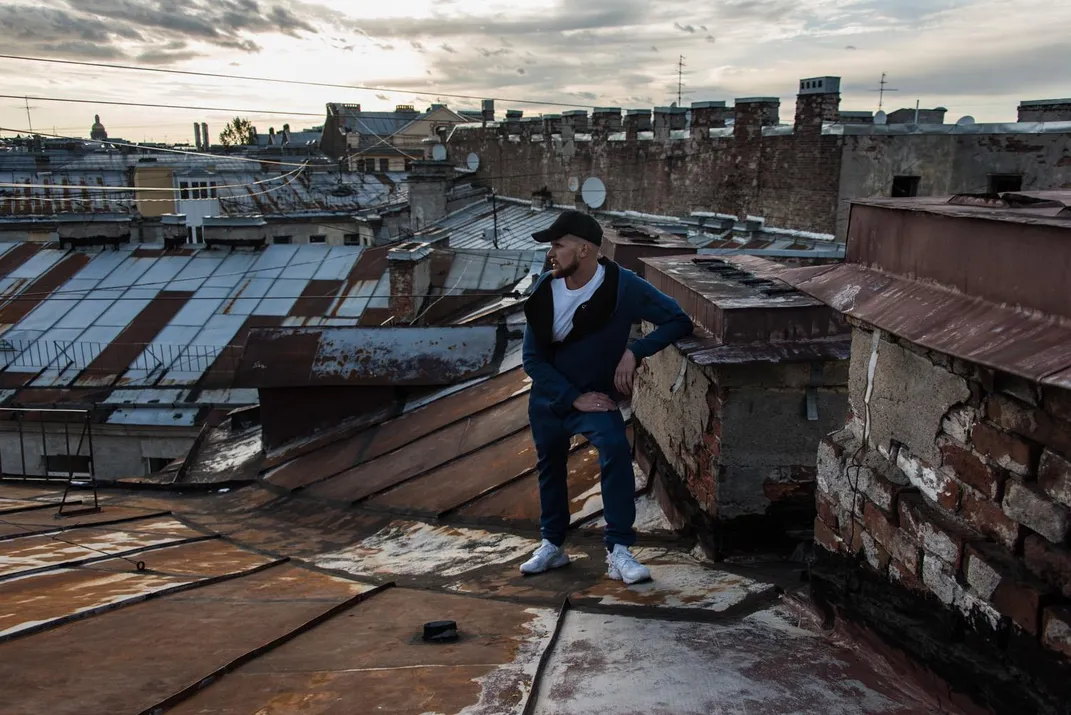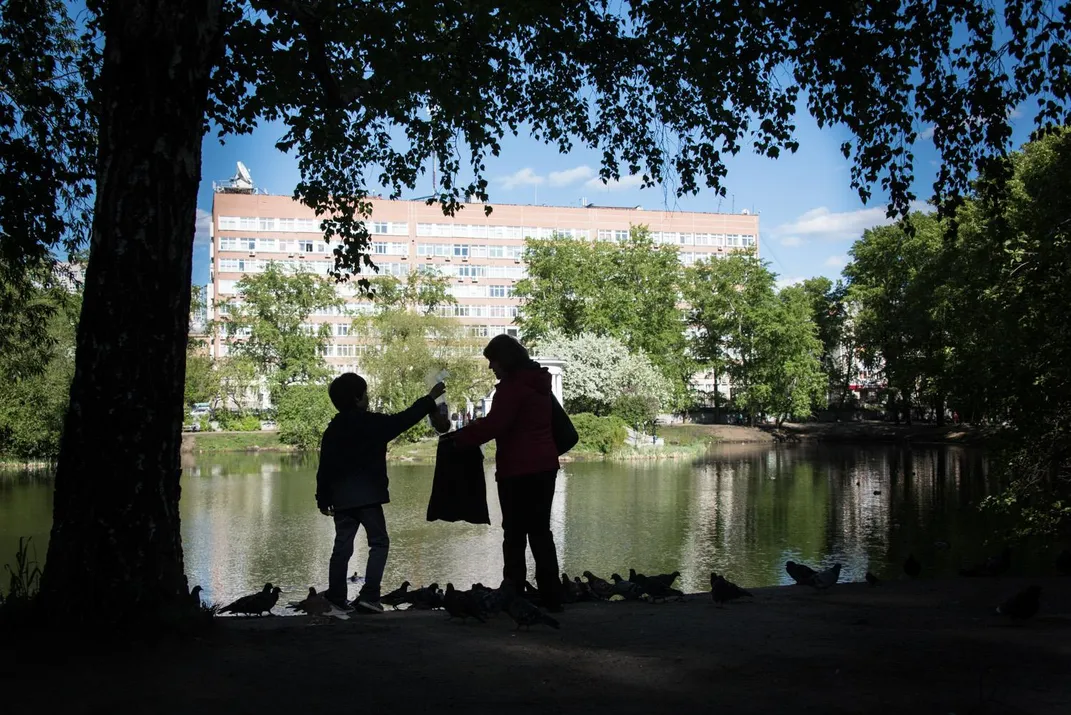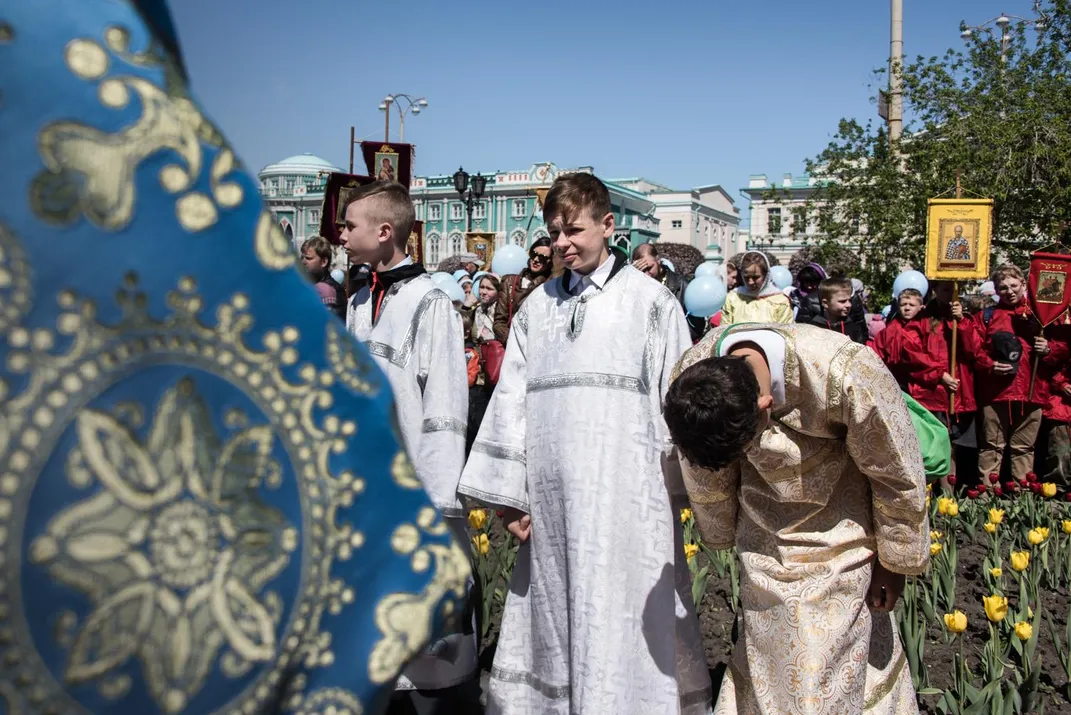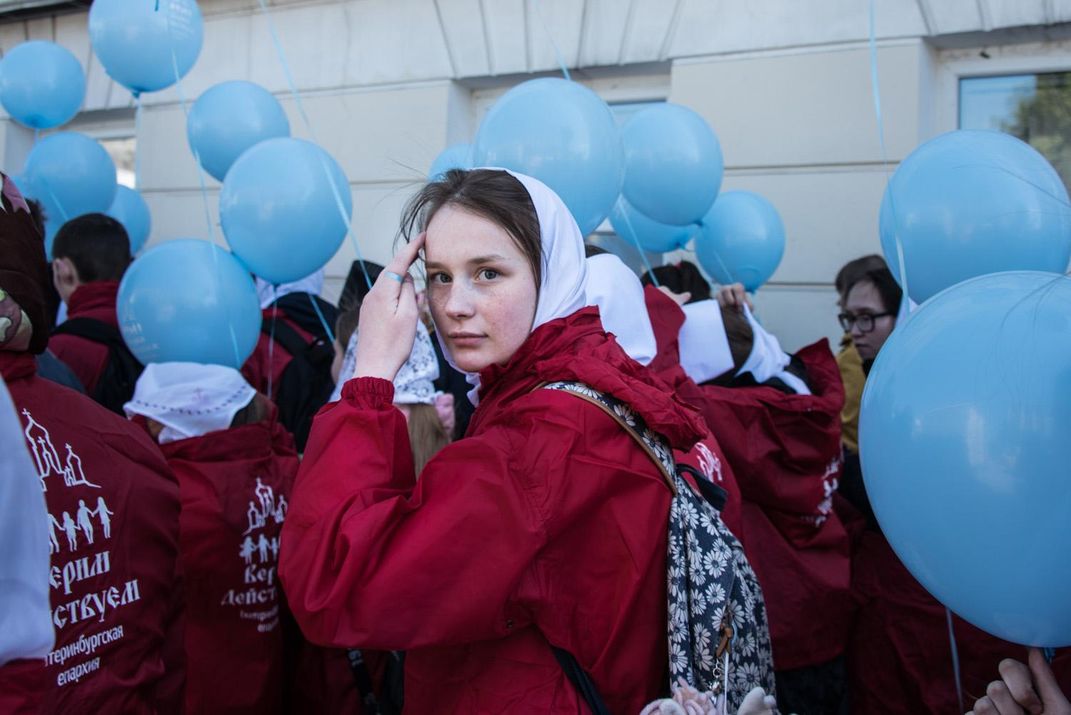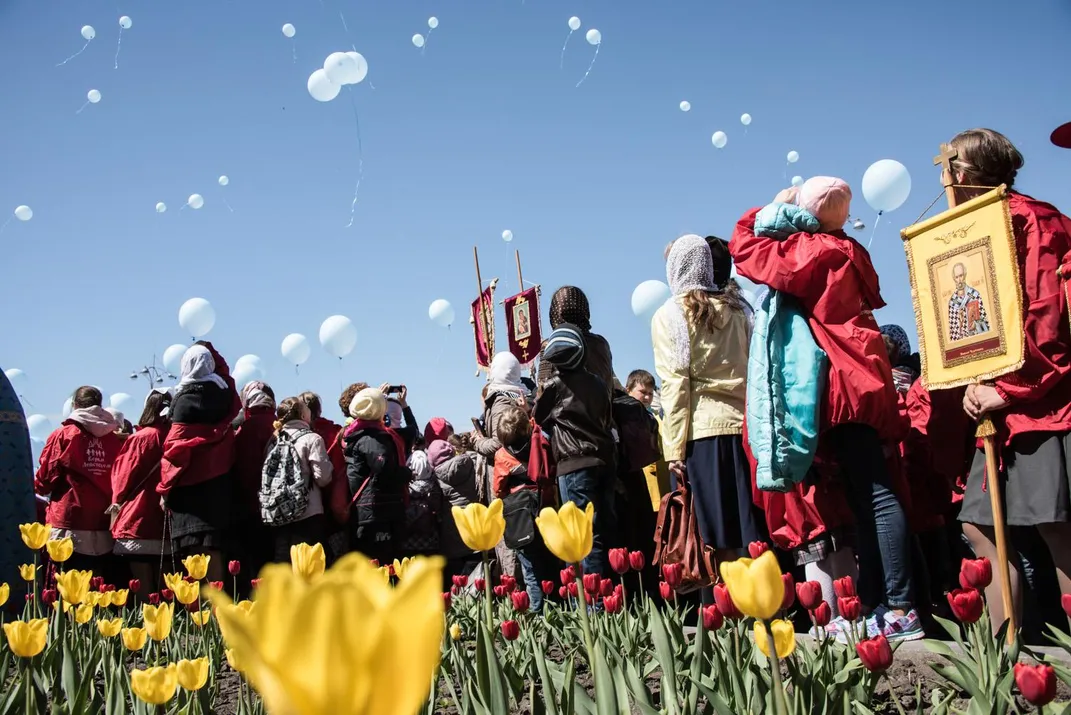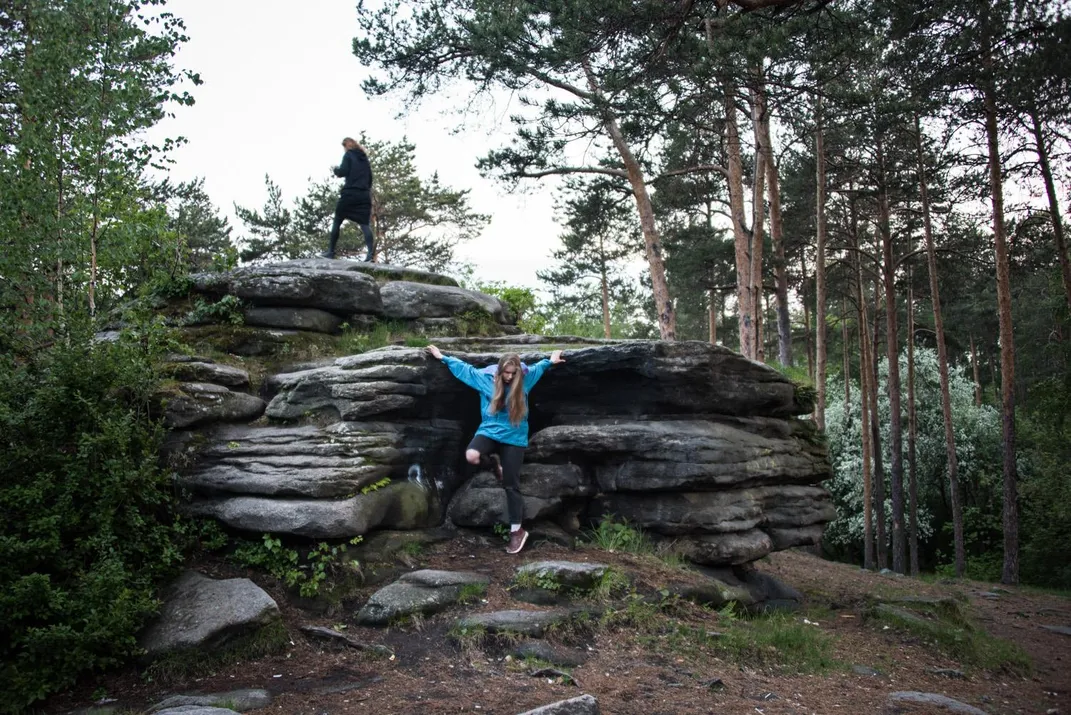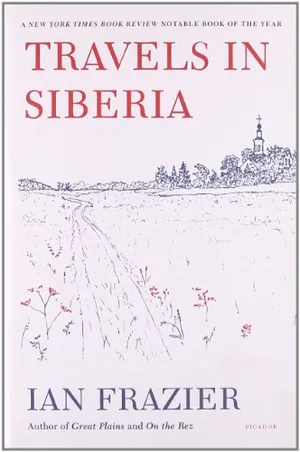1
Russia is both a great, glorious country and an ongoing disaster. Just when you decide it is the one, it turns around and discloses the other. For a hundred years before 1917, it experienced wild disorders and political violence interspersed with periods of unquiet calm, meanwhile producing some of the world’s greatest literature and booming in population and helping to feed Europe. Then it leapt into a revolution unlike any the world had ever seen. Today, a hundred years afterward, we still don’t know quite what to make of that huge event. The Russians themselves aren’t too sure about its significance.
I used to tell people that I loved Russia, because I do. I think everybody has a country not their own that they’re powerfully drawn to; Russia is mine. I can’t explain the attraction, only observe its symptoms going back to childhood, such as listening over and over to Prokofiev’s “Peter and the Wolf,” narrated by Peter Ustinov, when I was 6, or standing in the front yard at night as my father pointed out Sputnik crossing the sky. Now I’ve traveled enough in Russia that my affections are more complicated. I know that almost no conclusion I ever draw about it is likely to be right. The way to think about Russia is without thinking about it. I just try to love it and yield to it and go with it, while also paying vigilant attention—if that makes sense.
I first began traveling to Russia more than 24 years ago, and in 2010 I published Travels in Siberia, a book about trips I’d made to that far-flung region. With the fall of the Soviet Union, areas previously closed to travelers had opened up. During the 1990s and after, the pace of change in Russia cascaded. A harsh kind of capitalism grew; democracy came and mostly went. Then, two years ago, my son moved to the city of Yekaterinburg, in the Ural Mountains, on the edge of Siberia, and he lives there now. I see I will never stop thinking about this country.
As the 1917 centennial approached, I wondered about the revolution and tangled with its force field of complexity. For example, a question as straightforward as what to call certain Russian cities reveals, on examination, various options, asterisks, clarifications. Take St. Petersburg, whose name was changed in 1914 to Petrograd so as not to sound too German (at the time, Russia was fighting the Kaiser in the First World War). In 1924 Petrograd became Leningrad, which then went back to being St. Petersburg again in 1991. Today many of the city’s inhabitants simply call it “Peter.” Or consider the name of the revolution itself. Though it’s called the Great October Revolution, from our point of view it happened in November. In 1917, Russia still followed the Julian calendar, which lagged 13 days behind the Gregorian calendar used elsewhere in the world. The Bolshevik government changed the country to the Gregorian calendar in early 1918, soon after taking control. (All this information will be useful later on.)
In February and March I went to Russia to see what it was like in the centennial year. My way to travel is to go to a specific place and try to absorb what it is now and look closer, for what it was. Things that happen in a place change it and never leave it. I visited my son in Yekaterinburg, I rambled around Moscow, and I gave the most attention to St. Petersburg, where traces of the revolution are everywhere. The weather stayed cold. In each of the cities, ice topped with perfectly white snow locked the rivers. Here and there, rogue footprints crossed the ice expanses with their brave or heedless dotted lines. In St. Petersburg, I often passed Senate Square, in the middle of the city, with Étienne Falconet’s black statue of Peter the Great on his rearing horse atop a massive rock. Sometimes I saw newlyweds by the statue popping corks as an icy wind blew in across the Neva River and made the champagne foam fly. They were standing at a former pivot point of empire.
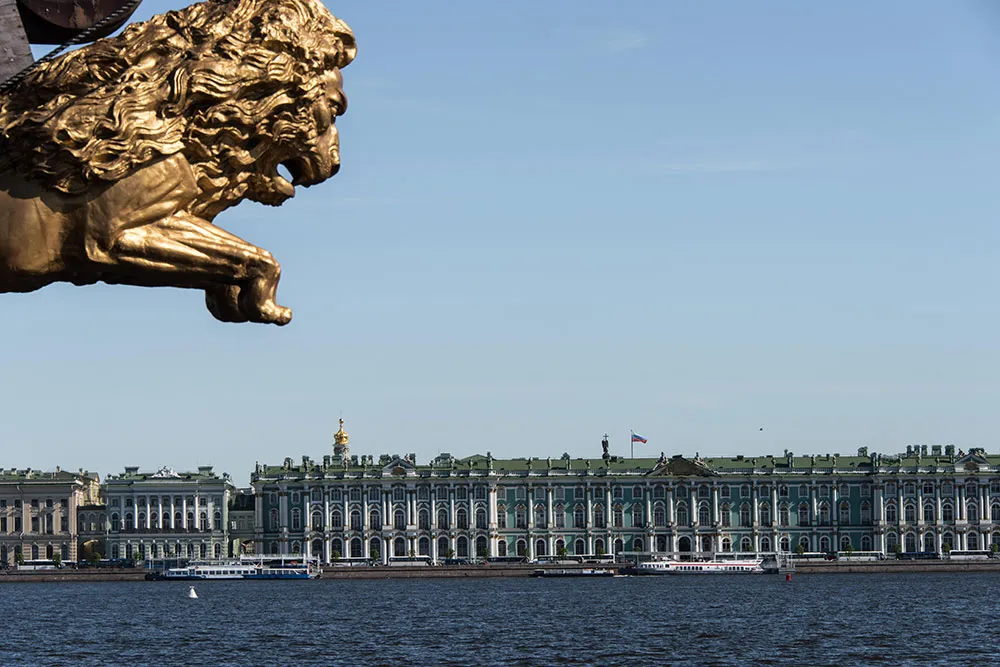
**********
I’ll begin my meditation in 1825, at the Decembrist uprising. The Decembrists were young officers in the czar’s army who fought in the Napoleonic wars and found out about the Enlightenment and came home wanting to reform Russia. They started a secret society, wrote a constitution based on the U.S. Constitution and, on December 14, at the crucial moment of their coup attempt, lost their nerve. They had assembled troops loyal to them on Senate Square, but after a daylong standoff Czar Nicholas I dispersed these forces with cannon fire. Some of the troops ran across the Neva trying to escape; the cannons shot at the ice and shattered it and drowned them. The authorities arrested 100-some Decembrists and tried and convicted almost all. The czar sent most to Siberia; he ordered five of the leaders hanged. For us, the Decembrists’ example can be painful to contemplate—as if King George III had hanged George Washington and sent the other signers of the Declaration of Independence to hard labor in Australia.
One good decision the Decembrists made was to not include Alexander Pushkin in their plot, although he was friends with more than a few of them. This spared him to survive and to become Russia’s greatest poet.
Tolstoy, of a younger generation than theirs, admired the Decembrists and wanted to write a book about their uprising. But the essential documents, such as the depositions they gave after their arrests, were hidden away under czarist censorship, so instead he wrote War and Peace. In Tolstoy’s lifetime the country’s revolutionary spirit veered into terrorism. Russia invented terrorism, that feature of modern life, in the 1870s. Young middle-class lawyers and university teachers and students joined terror groups of which the best known was Naródnaya Volia, or People’s Will. They went around shooting and blowing up czarist officials, and killed thousands. Alexander II, son of Nicholas I, succeeded his father in 1855, and in 1861 he emancipated the serfs. People’s Will blew him up anyway.
When Tolstoy met in 1886 with George Kennan, the American explorer of Siberia (and a cousin twice removed of the diplomat of the same name, who, more than a half-century later, devised Truman’s Cold War policy of “containment” of the Soviet Union), Kennan pleaded for support for some of the Siberian exiles he had met. But the great man refused even to listen. He said these revolutionaries had chosen violence and must live with the consequences.
Meanwhile Marxism was colonizing the brains of Russian intellectuals like an invasive plant. The intelligentsia (a word of Russian origin) sat at tables in Moscow and St. Petersburg and other cities in the empire or abroad arguing Marxist doctrine and drinking endless cups of tea, night after night, decade after decade. (If vodka has damaged the sanity of Russia, tea has been possibly worse.) Points of theory nearly impossible to follow today caused Socialist parties of different types to incubate and proliferate and split apart. The essential writer of that later-19th-century moment was Chekhov. The wistful, searching characters in his plays always make me afraid for them. I keep wondering why they can’t do anything about what’s coming, as if I’m at a scary movie and the teenage couple making out in the car don’t see the guy with the hockey mask and chain saw who is sneaking up on them.
The guy in the hockey mask was Vladimir I. Lenin. In 1887, his older brother, Aleksandr Ulyanov, a sweet young man by all accounts, joined a plot to assassinate Czar Alexander III. Betrayed by an informer (a common fate), Ulyanov was tried and found guilty, and he died on the gallows, unrepentant. Lenin, 17 at the time, hated his family’s liberal friends who dropped the Ulyanovs as a consequence. From then on, the czar and the bourgeoisie were on borrowed time.
**********
The Romanov dynasty stood for more than 300 years. Nicholas II, the last czar, a Romanov out of his depth, looked handsome in his white naval officer’s uniform. He believed in God, disliked Jews, loved his wife and five children, and worried especially about his youngest child, the hemophiliac only son, Alexei. If you want a sense of the last Romanovs, check out the Fabergé eggs they often gave as presents to each other. One afternoon I happened on a sponsored show of Fabergé eggs in a St. Petersburg museum. Such a minute concentration of intense, bejeweled splendor you’ve never seen. The diamond-encrusted tchotchkes often opened to reveal even littler gem-studded gifts inside. The eggs can stand for the czar’s unhelpful myopia during the perilous days of 1917. Viewers of the exhibit moved from display case to display case in reverent awe.
One can pass over some of the disasters of Nicholas’ reign. He was born unlucky on the name day of Job, the sufferer. On the day of his coronation, in 1896, a crowd of half a million, expecting a special giveaway in Moscow, panicked, trampling to death and suffocating 1,400 people. Nicholas often acted when he should have done nothing and did nothing when he should have acted. He seemed mild and benign, but after his troops killed hundreds of workers marching on the Winter Palace with a petition for an eight-hour workday and other reforms—the massacre was on January 9, 1905, later known as Bloody Sunday—fewer of his subjects thought of him as “the good czar.”
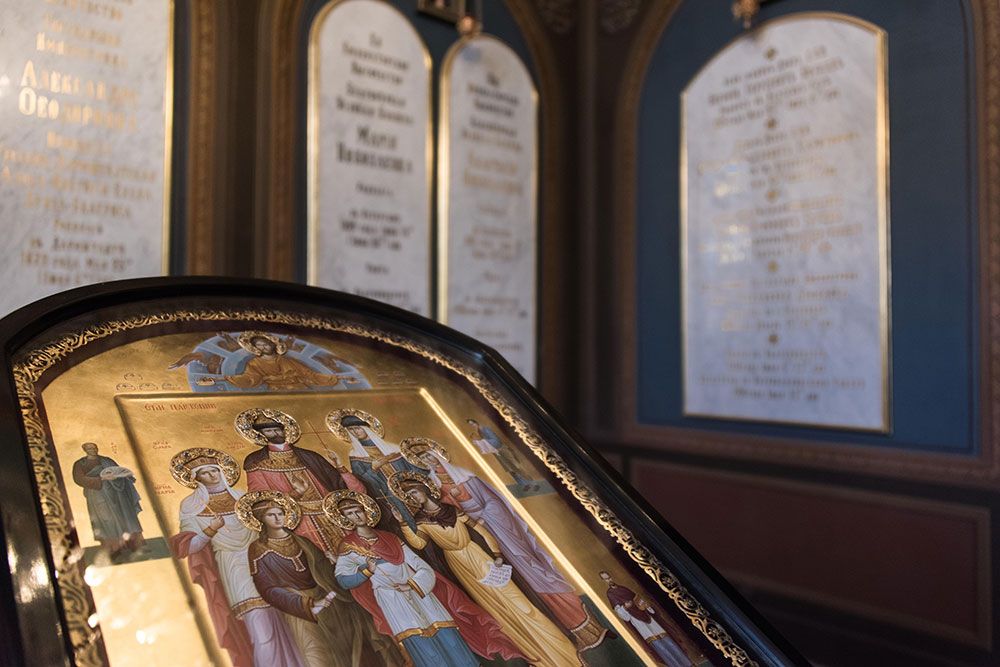
The 1905 protests intensified until they became the 1905 Revolution. The czar’s soldiers killed perhaps 14,000 more before it was under control. As a result, Nicholas allowed the convening of a representative assembly called the State Duma, Russia’s first Parliament, along with wider freedom of the press and other liberalizations. But the Duma had almost no power and Nicholas kept trying to erode the little it had. He did not enjoy being czar but believed in the autocracy with all his soul and wanted to bequeath it undiminished to his son.
It’s July 1914, just before the beginning of the First World War: The czar stands on a balcony of the Winter Palace, reviewing his army. The whole vast expanse of Palace Square is packed with people. He swears on the Bible and the holy icons that he will not sign for peace so long as one enemy soldier is standing on Russian soil. Love of the fatherland has its effect. The entire crowd, tens of thousands strong, falls to its knees to receive his blessing. The armies march. Russia’s attacks on the Eastern Front help to save Paris in 1914. Like the other warring powers, Russia goes into the trenches. But each spring, in 1915 and 1916, the army renews its advance. By 1917 it has lost more than three million men.
In America we may think of disillusionment with that war as a quasi-literary phenomenon, something felt by the writers of the Lost Generation in Paris. Long before America entered the war, Russian soldiers felt worse—disgusted with the weak czar and the German-born czarina, filled with anger at their officers, and enraged at the corruption that kept them poorly supplied. In the winter of 1916-17, they begin to appear in Petrograd as deserters and in deputations for peace, hoping to make their case before the Duma. The czar and the upper strata of Russian society insist that the country stay in the war, for the sake of national honor, and for their allies, some of whom have lent Russia money. Russia also hopes to receive as a war prize the Straits of Bosporus and the Dardanelles, which it has long desired. But the soldiers and common people see the idiocy of the endless, static struggle, and the unfair share they bear in it, and they want peace.
The absence of enough men to bring in the harvests, plus a shortage of railroad cars, plus an unusually cold winter, lead to a lack of bread in Petrograd. In February many city residents are starving. Women take to the streets and march on stores and bakeries crying the one word: “Khleb!” Bread! Striking workers from Petrograd’s huge factories, like the Putilov Works, which employs 40,000 men, join the disturbances. The czar’s government does not know what to do. Day after day in February the marches go on. Finally the czar orders the military to suppress the demonstrations. People are killed. But now, unlike in 1905, the soldiers have little to lose. They do not want to shoot; many of the marchers are young peasants like themselves, who have recently come to the city to work in the factories. And nothing awaits the soldiers except being sent to the front.
So, one after another, Petrograd regiments mutiny and join the throngs on the streets. Suddenly the czar’s government can find no loyal troops willing to move against the demonstrators. Taking stock, Nicholas’ ministers and generals inform him that he has no choice but to abdicate for the good of the country. On March 2 he complies, with brief complications involving his son and brother, neither of whom succeeds him.
Near-chaos ensues. In the vacuum, power is split between two new institutions: the Provisional Government, a cabinet of Duma ministers who attempt to manage the country’s affairs while waiting for the first meeting of the Constituent Assembly, a nationwide representative body scheduled to convene in the fall; and the Petrograd Soviet of Workers’ and Soldiers’ Deputies, a somewhat amorphous collection of groups with fluid memberships and multi-Socialist-party affiliations. (In Russian, one meaning of the word “soviet” is “council”—here, an essentially political entity.) The Petrograd Soviet is the working people’s organization, while the Provisional Government mostly represents the upper bourgeoisie. This attempt at dual governance is a fiction, because the Petrograd Soviet has the support of the factory workers, ordinary people and soldiers. In other words, it has the actual power; it has the guns.
The February Revolution, as it’s called, is the real and original Russian revolution. February supplied the raw energy for the rest of 1917—energy that Lenin and the Bolsheviks would co-opt as justification for their coup in October. Many classic images of the people’s struggle in Russia derive from February. In that month red became the color of revolution: Sympathetic onlookers wore red lapel ribbons, and marchers tore the white and blue stripes from the Russian flag and used the red stripe for their long, narrow banner. Even jaded Petrograd artistic types wept when they heard the self-led multitudes break into “The Marseillaise,” France’s revolutionary anthem, recast with fierce Russian lyrics. Comparatively little blood was shed in the February Revolution, and its immediate achievement—bringing down the Romanov dynasty—made a permanent difference. Unlike the coup of October, the February uprising had a spontaneous, popular, tectonic quality. Of the many uprisings and coups and revolutions Russia has experienced, only the events of February 1917 seemed to partake of joy.
2
The city of St. Petersburg endlessly explains itself, in plaques and monuments everywhere you turn. It still possesses the majesty of an imperial capital, with its plazas, rows of 18th- and 19th-century government buildings receding to a vanishing point, glassy canals and towering cloudscapes just arrived from the Baltic Sea. The layout makes a grand backdrop, and the revolution was the climactic event it served as a backdrop for.
A taxi dropped me beside the Fontanka Canal at Nevskii Prospekt, where my friend Luda has an apartment in a building on the corner. Luda and I met 18 years ago, when Russian friends who had known her in school introduced us. I rented one of several apartments she owns in the city for a few months in 2000 and 2001. We became friends despite lack of a common language; with my primitive but slowly improving Russian and her kind tolerance of it, we made do. Now I often stay with her when I’m in the city.
When we first knew each other Luda worked for the local government and was paid so little that, she said, she would be able to visit the States only if she went a year without eating or drinking. Then she met a rich Russian-American, married him and moved to his house in Livingston, New Jersey, about ten miles from us. After her husband died she stayed in the house by herself. I saw her often, and she came to visit us for dinner. The house eventually went to her husband’s children, and now she divides her time between St. Petersburg and Miami. I have more phone numbers for her than for anyone else in my address book.
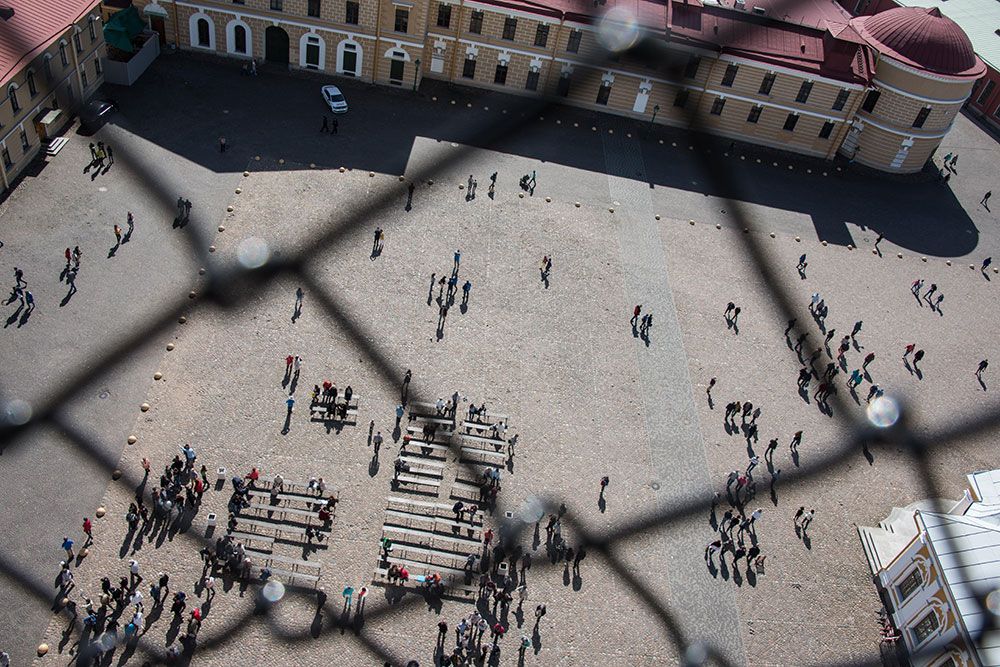
Her Nevskii apartment’s mid-city location is good for my purposes because when I’m in St. Petersburg I walk all over, sometimes 15 miles or more in a day. One morning, I set out for the Finland Station, on the north side of the Neva, across the Liteynyi Bridge from the city’s central district. The stroll takes about 20 minutes. As you approach the station, you see, on the square in front, a large statue of Lenin, speaking from atop a stylized armored car. One hand holds the lapel of his greatcoat, the other arm extends full length, gesturing rhetorically. This is your basic and seminal Lenin statue. The Finlandskii Voksal enters the story in April of 1917. It’s where the world-shaking, cataclysmic part of the Russian Revolution begins.
**********
Most of the hard-core professional revolutionaries did not participate in the February Revolution, having been earlier locked up, exiled or chased abroad by the czar’s police. (That may be why the vain and flighty Alexander Kerensky rose to power so easily after February: The major-leaguers had not yet taken the field.)
Lenin was living in Zurich, where he and his wife, Nadezhda Krupskaya, had rented a small, disagreeable room. Awaiting developments, Lenin kept company with other expatriate Socialists, directed the Petrograd Bolsheviks by mail and telegram, and spent time in the public library. He did not hear of the czar’s abdication until some time after the fact. A Polish Socialist stopped by and brought news of revolution in Russia in the middle of the day, just after Krupskaya had finished washing the lunch dishes. Immediately Lenin grew almost frantic with desire to get back to Petrograd. His wife laughed at his schemes of crossing the intervening borders disguised as a speech- and hearing-impaired Swede, or of somehow obtaining an airplane.
Leon Trotsky, who would become the other major Bolshevik of the revolution, was then living in (of all places) the Bronx. With his wife and two young sons he had recently moved into a building that offered an elevator, garbage chute, telephone and other up-to-date conveniences the family enjoyed. Trotsky hailed the February Revolution as a historic development and began to make arrangements for a trans-Atlantic voyage.
Both Trotsky and Lenin had won fame by 1917. Lenin’s Bolshevik Party, which emerged from the Russian Social-Democratic Labor Party in 1903, after splitting with the more moderate Mensheviks, kept its membership to a small group of dedicated followers. Lenin believed that the Bolsheviks must compromise with nobody. Since 1900, he had lived all over Europe, spending more time outside Russia than in it, and emphasized the international aspect of the proletariat revolution. Lenin wrote articles for Socialist journals and he published books; many devotees knew of him from his writings. Trotsky also wrote, but he was a flashier type and kept a higher public profile. Born Lev Davidovich Bronstein in the Ukraine, he had starred in the 1905 Revolution: At only 26 he organized a Soviet of Workers’ Deputies that lasted for 50 days before the government crushed it.
Lenin’s return to Russia required weeks of arrangements. Through German contacts he and a party of other exiled revolutionaries received permission to go by train via Germany, whose government encouraged the idea in the hope that Lenin and his colleagues would make a mess of Russia and thereby help Germany win the war. In pursuit of their political ends Lenin and the Bolsheviks acted as German agents and their policy of “revolutionary defeatism” strengthened the enemy. They went on to receive tens of millions of German marks in aid before the Kaiser’s government collapsed with the German defeat, although that collusion would not be confirmed until later.
The last leg of Lenin’s homeward journey led through Finland. Finally, at just after 11 on the night of April 16, he arrived in Petrograd at the Finland Station. In all the iconography of Soviet Communism few events glow as brightly as this transfiguring arrival. Lenin and his fellows assumed they would be arrested upon stepping off the train. Instead, they were met by a band playing “The Marseillaise,” sailors standing in ranks at attention, floral garlands, a crowd of thousands and a searchlight sweeping its beam through the night. The president of the Petrograd Soviet, a Menshevik, welcomed Lenin with a condescending speech and reminded him that all Socialists now had to work together. Lenin listened abstractedly, looking around and toying with a bouquet of red roses someone had given him. When he responded, his words “cracked like a whip in the face of the ‘revolutionary democracy,’” according to one observer. Turning to the crowd, Lenin said,
Dear Comrades, soldiers, sailors, and workers!
I am happy to greet in your persons the victorious Russian revolution, and to greet you as the vanguard of the worldwide proletarian army...the hour is not far distant when at the call of our comrade Karl Liebknecht, the people of Germany will turn their arms against their own capitalist exploiters...The worldwide Socialist revolution has already dawned...the Russian revolution accomplished by you has prepared the way and opened a new epoch. Long live the worldwide Socialist revolution!
A member of the Petrograd Soviet named Nikolai Sukhanov, who later wrote a seven-volume memoir of the revolution, heard Lenin’s speech and was staggered. Sukhanov compared it to a bright beacon that obliterated everything he and the other Petrograd Socialists had been doing. “It was very interesting!” he wrote, though he hardly agreed with it. I believe it affected him—and all of Russia, and the revolution, and a hundred years of subsequent history—because not since Peter the Great had anyone opened dark, remote, closed-in Russia so forcefully to the rest of the world. The country had long thought of itself as set apart, the “Third Rome,” where the Orthodox Faith retained its original and unsullied purity (the Second Rome having been Constantinople). But Russia had never spread that faith widely abroad.
Now Lenin informed his listeners that they had pioneered the international Socialist revolution, and would go forth into the world and proselytize the masses. It was an amazing vision, Marxist and deeply Russian simultaneously, and it helped sustain the despotic Bolsheviks, just as building St. Petersburg, no matter how brutal the cost, drove Peter the Great 200 years before. After Lenin, Russia would involve itself aggressively in the affairs of countries all over the world. That sense of global mission, soon corrupted to strategic meddling and plain troublemaking, is why America still worries about Russia today.
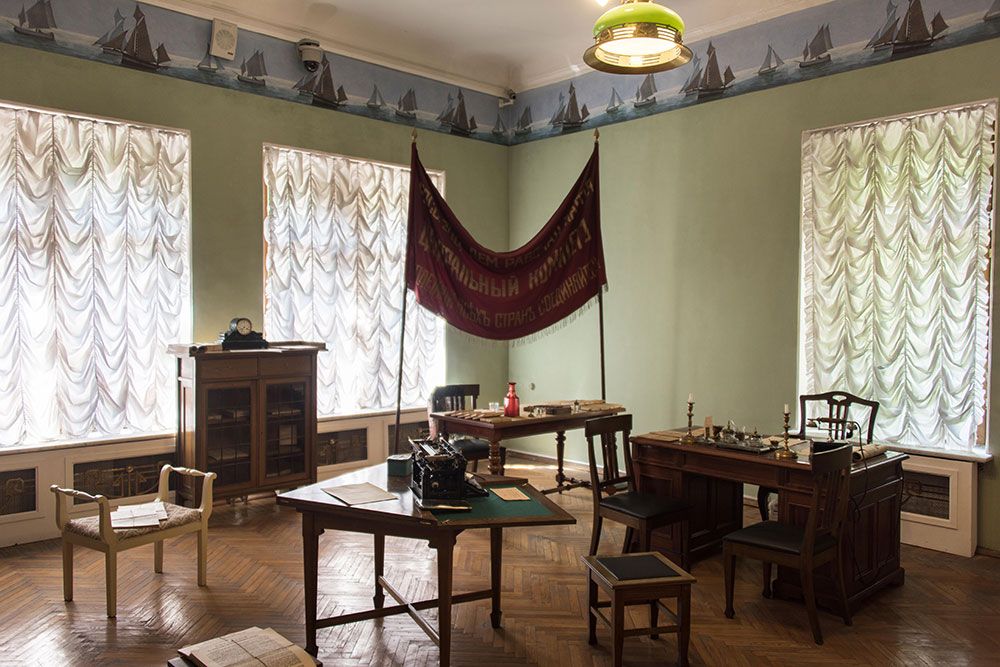
Making his ascension to the pantheon complete, Lenin then went out in front of the station and gave a speech from atop an armored car. It is this moment that the statue in the plaza refers to. Presumably, the searchlight illuminated him, film-noirishly. As the armored car slowly drove him to Bolshevik headquarters he made more speeches standing on the vehicle’s hood. Items associated with this holy night have been preserved as relics. The steam engine that pulled the train that Lenin arrived in resides in a glass enclosure next to the Finland Station’s Platform Number 9. And an armored car said to be the same one that he rode in and made the speeches from can be found in an unfrequented wing of the immense Artillery Museum, not far away.
Guards are seldom in evidence in the part of the museum where the historic bronevik sits permanently parked. Up close the armored car resembles a cartoon of a scary machine. It has two turrets, lots of rivets and hinges, flanges for the machine guns, solid rubber tires, and a long, porcine hood, completely flat and perfect for standing on. The vehicle is olive drab, made of sheet iron or steel, and it weighs about six tons. With no guard to stop me I rubbed its cold metal flanks. On its side, large, hand-painted red letters read: VRAG KAPITALA, or “Enemy of Capital.”
When Lenin mounted this metal beast, the symbolic connection to Peter the Great pulled tight. Falconet’s equestrian Peter that rears its front hooves over Senate Square—as it reared over the dead and wounded troops of the Decembrists in 1825—haunts the city forever. It’s the dread “Bronze Horseman” of the Pushkin poem. Gesturing dramatically from atop his armored beast-car, Lenin can be construed as re-enacting that statue, making it modernist, and configuring in his own image the recently deposed Russian autocracy.
Alone with the beast in the all-but-deserted Artillery Museum, I went over it again. At its back, on the lower corners on each side, two corkscrew-shaped iron appendages stuck out. I could not imagine what they were for. Maybe for attaching to something? But then why not use a simple metal hitch or loop? I still don’t know. And of course the appendages looked exactly like the tails of pigs. Russia is an animist country. In Russia all kinds of objects have spirits. Non-animal things are seen as animals, and often the works of men and women are seen as being identical with the men and women themselves. This native animism will take on special importance in the case of Lenin.
**********
Bolshevik headquarters occupied one of the city’s fanciest mansions, which the revolutionaries had expropriated from its owner, a ballerina named Matilda Kshesinskaya. Malice aforethought may be assumed, because Kshesinskaya had a thing for Romanovs. After a performance when she was 17, she met Nicholas, the future czar, and they soon began an affair that lasted for a few years, until Alexander III died. Nicholas then ascended the throne and married the German princess Alix of Hesse (thenceforth to be known as Empress Alexandra Feodorovna). After Nicholas, the ballerina moved on to his father’s first cousin, Grand Duke Sergei Mikhailovich. During her affair with that grand duke, she met another one—Grand Duke Andrei Vladimirovich, Nicholas’ first cousin. They also began an affair. Such connections helped her to get good roles in the Imperial Ballet, although, in fairness, critics also regarded her as an outstanding dancer.
Whom she knew came in handy during the hard days of the war. In the previous winter the British ambassador, Sir George Buchanan, had been unable to find coal to heat his embassy. He even asked the head of the Russian Navy, who said there was none. While out on a walk with the French ambassador, Buchanan happened to see four military lorries at Kshesinskaya’s house and a squad of soldiers unloading sacks of coal. “Well, if that isn’t a bit too thick!” Buchanan remarked. Good contacts kept her a step ahead of events in 1917. Warned, Kshesinskaya fled with her more portable valuables before the Bolsheviks arrived. Later she and her son and Grand Duke Andrei emigrated to Paris, where she ran a ballet school and lived to be almost 100 years old. A movie, Matilda, based on her affair with Nicholas, is due to be released in Russia on October 25, 2017. Admirers of Nicholas have sought to ban it, arguing that it violates his privacy.
The mansion, an example of the school known as Style Moderne, won a prize for the best building facade in St. Petersburg from the City Duma in 1910, the year after its construction. It sits on a corner near Trinity Square, and from a second-story French window a balcony with decorative wrought-iron grillwork extends above the street. In Soviet times the mansion became the Museum of the October Revolution, said to be confusing for its many omissions, such as not showing any pictures of Trotsky. Today the building houses the Museum of Russian Political History, which tells the story of the revolution in clear and splendid detail, using text, photos, film, sounds and objects.
I have spent hours going through its displays, but my favorite part of the museum is the balcony. I stand and stare at it from the sidewalk. Upon his arrival from the Finland Station, Lenin made a speech from this balcony. By then he had grown hoarse. Sukhanov, who had followed the armored car’s procession, could not tear himself away. The crowd did not necessarily like what it heard, and a soldier near Sukhanov, interpreting Lenin’s internationalist sentiments as pro-German, said that he should be bayoneted—a reminder that although “Bolshevik” meant, roughly, “one of the majority,” not many ordinary Russians, or a majority of Socialists, or even all Bolsheviks, shared Lenin’s extreme views.
Lenin gave other speeches from the balcony during the three months more that the Bolsheviks used the mansion. Photographs show him speaking from it, and it appears in Socialist Realist paintings. A plaque notes the balcony’s revolutionary role, but both plaque and subject are above eye level, and no passersby stop to look. In fact, aside from the pope’s balcony in Rome, this may be the most consequential balcony in history. Today the ground where the listeners stood holds trolley-bus tracks, and cables supporting the overhead electric wires attach to bolts in the wall next to the balcony.
I can picture Lenin: hoarse, gesticulating, smashing the universe with his incisive, unstoppable words; below him, the sea of upturned faces. Today an audience would not have much room to gather here, with the trolley buses, and the fence enclosing a park just across the street. Like a formerly famous celebrity, this small piece of architecture has receded into daily life, and speeches made from balconies no longer rattle history’s windowpanes.
**********
In the enormous three-ring shouting match and smoke-filled debating society that constituted revolutionary Petrograd during the months after the czar’s removal, nobody picked the Bolsheviks to win. You had parties of every political ilk, from far left to far right, and schismatic groups within them, such as the Social-Democratic Labor Party’s less radical wing (the Mensheviks); another powerful party, the Socialist-Revolutionaries, had split contentiously into Left SR’s and Right SR’s. Added to these were many other parties, groups and factions—conservatives, populists, moderates, peasant delegations, workers’ committees, soldiers’ committees, Freemasons, radicalized sailors, Cossacks, constitutional monarchists, wavering Duma members. Who knew what would come out of all that?
Under Lenin’s direction the Bolsheviks advanced through the confusion by stealth, lies, coercion, subterfuge and finally violence. All they had was hard-fixed conviction and a leader who had never been elected or appointed to any public office. Officially, Lenin was just the chairman of the “Central Committee of the Russian Social-Democratic Labor Party (Bolsheviks),” as their banner read.
The dominant figure of Alexander Kerensky, a popular young lawyer, bestrode these days like a man with one foot on a dock and the other on a leaky skiff. He came from the city of Simbirsk, where his family knew the Ulyanovs. His father had taught Lenin in high school. Kerensky had defended revolutionaries in court and sometimes moved crowds to frenzy with his speeches. As the vice chairman of the Petrograd Soviet and, simultaneously, the minister of war (among other offices) in the Provisional Government, he held unique importance. Dual government, that practical implausibility, embodied itself in him.
Some participants in the Russian Revolution could not get the fate of the French Revolution out of their heads, and Kerensky was among them. When spring moved toward summer, he ordered a new, make-or-break offensive in the war, and soon mass demonstrations for peace boiled over again in Petrograd. The Bolsheviks, seeing advantage, tried to seize power by force in April and again in early July, but Kerensky had enough troops to shut these tentative coup attempts down. Also, Lenin’s traitorous connection to the Germans had begun to receive public attention. Concerned about being arrested or lynched, he hurried back to Finland. But Kerensky felt only contempt for the Bolsheviks. Thinking of Napoleon’s rise, he mainly dreaded a counterrevolution from the right.
This predisposition caused him to panic in August while trying to keep the war going and supply himself with loyal troops in the capital. After giving ill-considered and contradictory orders that caused one general, fearing arrest, to shoot himself, Kerensky then accused the commanding general, Lavr Kornilov, of mutiny. Kornilov, who had not, in fact, mutinied, became enraged by the charge and decided to mutiny for real. He marched on Petrograd, where a new military force, the Red Guards, awaited him. This ad-hoc people’s militia of young workers and former Russian Army soldiers carried weapons liberated in the February mutinies. Rallied by the Bolsheviks, the Red Guards stopped Kornilov before he reached the capital. The Kornilov episode strengthened the Bolsheviks’ credibility and destroyed Kerensky’s support among the regular military. Now he would not have an army when he needed one.
With Lenin in hiding, Trotsky kept the Bolsheviks on message with their promise of “Bread, Peace, and Land.” The first two watchwords were self-explanatory, and the third went back to a hope the peasants had nourished since before emancipation in the 19th century. Their wish that all privately held lands would be distributed to the smaller farmers ran deep. The slogan’s simplicity had an appeal; none of the promises would be fulfilled, but at least the party knew what people wanted to hear. In September, for the first time, the Bolsheviks won a majority of seats in the Petrograd Soviet. Responding to perceived threats from “Kornilovites” and other enemies of the revolution, the Petrograd Soviet also established its Military Revolutionary Committee, or MRC. For the Bolsheviks, this put an armed body of men officially at their command.
Lenin sneaked back from Finland but remained out of sight. Kerensky now held the titles of both prime minister and commander in chief, but had lost most of his power. The country drifted, waiting for the Second All-Russian Congress of Soviets that was set to meet in October, and beyond that, for the promised first gathering of the Constituent Assembly. Both these bodies would consider the question of how Russia was to be governed. Lenin knew that no better time for a takeover would ever present itself. He wanted to act quickly so as to hand the upcoming assemblies a fait accompli. Through the night of October 10, in the apartment of a supporter, Lenin argued with the other 11 members of the party’s Central Committee who were there. Relentlessly, he urged an immediate armed takeover. Several of the dissenters thought he was moving too fast.
By morning the committee voted in his favor, 10 to 2.
3
One can read about these events in Sukhanov’s The Russian Revolution 1917: A Personal Record (a good abridgment came out in 1984); or in Richard Pipes’ classic, The Russian Revolution; or in Edmund Wilson’s fascinating intellectual history, To the Finland Station; or in Trotsky’s extensive writings on the subject; or in many other books. For the coup itself I rely on my hero, John Reed.
I first became swept up in the story of the Russian Revolution when I read Reed’s landmark eyewitness account, Ten Days That Shook the World. Reed went to Harvard, class of 1910, and joined the humor magazine, the Lampoon. He had the college-boy hair of that era, the kind that went up and back, in waves—Mickey Rooney hair. None of the fancier clubs asked him to join, and I wouldn’t wonder if the pain of that, for a young man whose family had some standing in far-off Portland, Oregon, didn’t help make him a revolutionary. When I joined the Lampoon, 59 years later, a member pointed out to me the building’s stained-glass window in memory of Reed. It shows a silver hammer and sickle above Reed’s name and year, on a Communist-red background. Supposedly the window had been a gift from the Soviet Union. The strangeness of it gave me shivers. At that stage of the Cold War, Russian missiles were shooting down American jets in Vietnam. How had this man come to be revered by the other side?
Reed dwelt in romance. Everything he did had style. In college he cut a wide swath, leading the cheers at football games, writing plays, publishing poetry and tossing off grand gestures, like hopping a ship for Bermuda during spring break and returning to campus late and getting in trouble with the dean. Three years after graduation he was riding with Poncho Villa’s rebels in Mexico. Insurgent Mexico, the book he wrote about the experience, made him famous at 27. When the First World War started he decamped to Europe. On a tour of the front lines he somehow managed to cross over to the entrenchments of the Germans, where, at the invitation of a German officer, he fired a couple of shots in the direction of the French. When he returned to New York, news of this exploit got out, and afterward the French quite understandably refused to let him back into France.
So he made his next trip to the Eastern Front instead. The journey brought him to Russia, and to a passion for the country that would determine the rest of his life. In his 1916 book The War in Eastern Europe, Reed wrote:
[Russia is] an original civilization that spreads by its own power...And it takes hold of the minds of men because it is the most comfortable, the most liberal way of life. Russian ideas are the most exhilarating, Russian thought the freest, Russian art the most exuberant; Russian food and drink are to me the best, and Russians themselves are, perhaps, the most interesting human beings that exist.
Yikes! As an intermittent sufferer of this happy delusion myself, I only note that it may lead a person astray. In 1917, paying close attention to events, Reed knew he had to return to Russia. He arrived in Petrograd in September, not long after the Kornilov mutiny. (With him was his wife, the writer Louise Bryant.) What he saw around him thrilled him. He had participated in strikes and protests in the U.S., gone to jail, and shared in the hope of an international socialist revolution. “In the struggle my sympathies were not neutral,” he wrote in the preface to Ten Days. With the unsleeping strength of youth he went everywhere in Petrograd and saw all he could. By limiting a vast historical movement to what he experienced over just a short period (in fact, a span somewhat longer than ten days), he allowed his focus to get up-close and granular.
The Sites of St. Petersburg
Research by David Lovett • Map by Guilbert Gates
St. Petersburg has not changed much from when it was revolutionary Petrograd. The Bolsheviks’ move of the government to Moscow in 1918 exempted the former capital from a lot of tearing-down and rebuilding; becoming a backwater had its advantages. In places where Reed stood you can still picture how it looked to him. He wrote:
What a marvelous sight to see Putilovsky Zavod [the Putilov Factory] pour out its forty thousand to listen to Social Democrats, Socialist Revolutionaries, anarchists, anybody, whatever they had to say, as long as they would talk!
Today that factory is called Kirovsky Zavod and it has its own metro station of that name, on the red line, southeast of the city center. Photographs from 1917 show the factory with a high wall along it and big crowds of people on the street in front. Now the wall and the factory’s main gate are almost the same as then. Next to the gate a big display highlights some of what is built here—earthmovers, military vehicles, atomic reactor parts. The factory wall, perhaps 15 feet high, runs for half a mile or more next to the avenue that adjoins it. Traffic speeds close by; no large crowds of workers could listen to speakers here. Like many of the public spaces important in the revolution this one now belongs to vehicles.
At a key moment in the Bolsheviks’ takeover, Reed watched the army’s armored-car drivers vote on whether to support them. The meeting took place in the Mikhailovsky Riding School, also called the Manège, a huge indoor space where “some two thousand dun-colored soldiers” listened as speakers took turns arguing from atop an armored car and the soldiers’ sympathies swung back and forth. Reed observes the listeners:
Never have I seen men trying so hard to understand, to decide. They never moved, stood staring with a sort of terrible intentness at the speaker, their brows wrinkled with the effort of thought, sweat standing out on their foreheads; great giants of men with the innocent clear eyes of children and the faces of epic warriors.
Finally the Bolshevik military leader, N.V. Krylenko, his voice cracking with fatigue, gives a speech of such passion that he collapses into waiting arms at the end. A vote is called: those in favor to one side; those opposed, to the other. In a rush almost all the soldiers surge to the Bolshevik side.
The building where this happened is on Manège Square; Luda’s apartment is just around the corner. Today the former riding academy has become the Zimnoi Stadion, the Winter Stadium, home to hockey matches, skating competitions and non-ice events like track meets. The last time I saw it the nearby streets were filled with parents and little kids carrying balloon animals and other circus souvenirs.
I think of the scene from Reed’s book whenever I pass by. He caught the details, large and small—the dreary, rainy November weather, with darkness coming at 3 in the afternoon; the posters and notices and manifestoes covering the city’s walls; the soldier who was putting up some of the notices; and the little boy who followed behind him, with a bucket of paste. And the mud. Reed observed it on greatcoats, boots, floors, stairways. I have often marveled at the big patches of mud that suddenly appear in the middle of completely paved St. Petersburg avenues. Then I remember the swamp the city was built on. The February Revolution happened in the snow, but in swampy Russia, the glorious October Revolution happened in the mud.
**********
Ten Days that Shook the World is a rare example of a book that is better for being more complicated. Reed could have spared his readers the effort of figuring out who was who among (as he put it) “the multiplicity of Russian organizations—political groups, Committees and Central Committees, Soviets, Dumas, and Unions.” Instead he begins the book with a detailed list, including the sub-distinctions among them. It’s like a speed bump to slow the reader down, but it’s also respectful. The care he took kept his book alive even after Soviet censors banned it during the Stalin era. (Stalin has basically no role in Ten Days and his name appears only twice.)
The book returned to publication during the Khrushchev period, after Stalin’s death, though even then it was not much read. Boris Kolonitsky, a leading historian of the revolution, found his vocation when he happened on a copy of the book at the age of 14. Today Kolonitsky is first vice-rector and professor of history at the European University at St. Petersburg, and has been a visiting professor at Yale, Princeton and the University of Illinois. I met him at his university office in a building near the Kutuzov Embankment of the Neva.
Kolonitsky looks like a professor, with a beard and round glasses and quick, dark-blue eyes, and his jacket and tie reinforce a courteous, formal manner. I asked how he had first discovered Reed’s book.
“I was born in Leningrad, my early schooling was here, and I graduated from the history department of the Hertzen State Pedagogical University in Leningrad,” he said. “So I am a Leningrad animal from a long way back, you might say. The fact that Reed’s book takes place mostly in this city made a connection for me. I first read it when I was in middle school, and of course at that time it was impossible not to know the Soviet story of the glorious October—the volley from the cruiser Aurora, the storming of the Winter Palace and so forth. For me reading Reed was very much a cultural shock. Suddenly here before me was a complicated and contradictory story. Reed was greatly in sympathy with the Bolsheviks but also a very good journalist, and his picture is multidimensional, not just black and white—or Red and White. Trotsky, for example, who had become a nonperson, is vivid in the book. Also the opponents of the Bolsheviks were much more complicated than in Soviet iconography. Later, when I became a teacher (still in Soviet times), I assigned this book to my students and they came back to me with their eyes wide and said, ‘Boris Ivanovich, this is an anti-Soviet book!’”
I mentioned Reed’s courage. “Yes, at one point in the book they are going to shoot him on the spot!” Kolonitsky said. “He is near the front at Tsarskoe Selo”—a village about 15 miles south of Petrograd—“where the Whites are making an attack, and he becomes separated from the soldiers who brought him; and then other Red Guards, who are illiterate, cannot read the journalist’s pass he has from the Bolshevik leadership, and they tell him to stand by a wall, and suddenly he realizes they are about to shoot him. He persuades them to find someone who can read.”
“And afterward he does not make any big production about it,” I said. “He just goes on reporting.”
“It was not a rational time, not a conscious time,” Kolonitsky said. “Reed did not speak much Russian and what surrounded him often was simply chaos.”
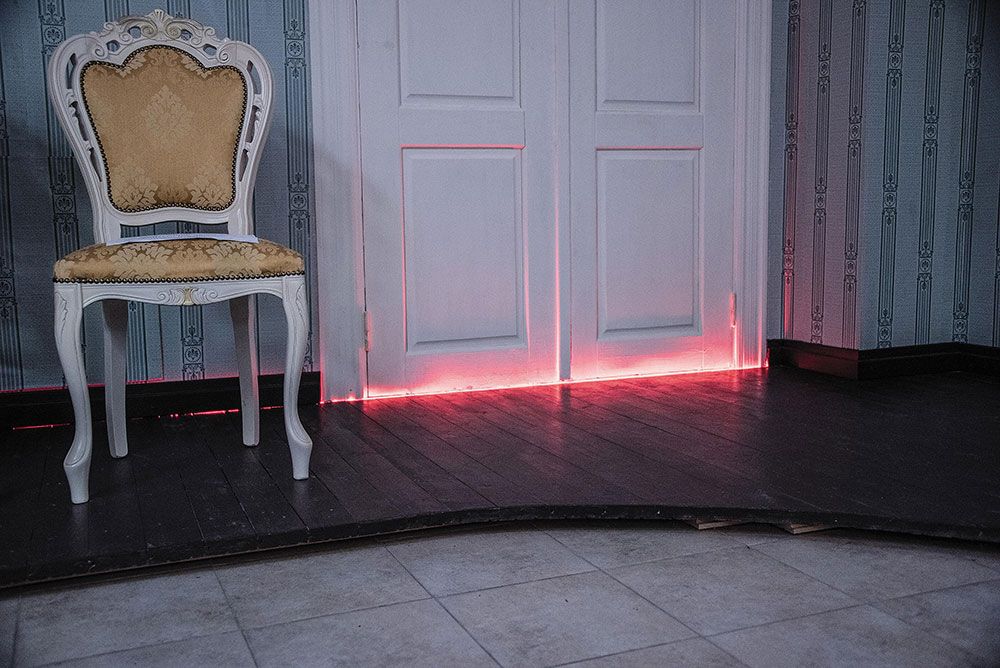
I had noticed, at the Museum of Russian Political History, that Kolonitsky was scheduled to lecture on “Rumor in Revolutionary Petrograd in October of 1917.” I asked about his work on rumor and the popular culture of the revolution.
“Well, this subject had not been too much written on before. Rumor and street culture—jokes, postcards, sayings, bawdy plays performed in saloons—changed the image of the czar and the czarina, desacralized them, before and during the war. Empress Alexandra’s dependence on Rasputin, the so-called crazed monk, had catastrophic consequences. Tales of the czarina’s debauchery with Rasputin (completely untrue), and rumors of the czar’s impotence, and her supposed sabotage of the war effort because she was born in Germany, all undermined the Romanovs, until finally nobody could be too sad when the monarchy went away. People sent each other erotic postcards of the czarina with Rasputin, audiences howled laughing at plays about his supposed sexual power. It resembled modern defamation by social media, and it did great damage. I call it the ‘tragic erotics’ of Nicholas’ reign. If you loved Russia you were obliged to love your czar. People were saying, ‘I know I must love my czar, but I cannot.’”
He went on, “Rumor also had a very big role in October of 1917, of course. Kerensky, whom many people almost worshiped, was damaged by rumors about his affair with his wife’s cousin, or about his fantasies of his own greatness, or his supposed plan to abandon Petrograd to the Germans. Many such rumors spread through the crowds on the streets. It caused a highly unstable atmosphere.”
**********
Everybody knew that the Bolsheviks were planning an overthrow. In the Duma, Kerensky reassured its members that the state had sufficient force to counter any Bolshevik action. Reed obtained an interview with Trotsky, who told him that the government had become helpless. “Only by the concerted action of the popular mass,” Trotsky said, “only by the victory of proletarian dictatorship, can the Revolution be achieved and the people saved”—that is, a putsch would come soon. The Bolshevik-run Military Revolutionary Committee began making demands for greater control of the army, and the Petrograd garrison promised to support the MRC. In response, Kerensky ordered loyal army units to occupy key points in the city.
Lenin, who had not appeared in public since July, narrowly escaped arrest as he made his way in disguise to Bolshevik headquarters, now at the Smolny Institute, a vast building that had formerly housed a school for noble-born girls. In meetings of the Petrograd Soviet and of the long-awaited Second All-Russian Congress of Soviets (both also housed in Smolny), and in the State Duma, thunderous arguments raged about the course the Bolsheviks were taking. Defending his party before the Petrograd Soviet, Trotsky stepped forward, “[h]is thin, pointed face,” Reed wrote, “positively Mephistophelian in its expression of malicious irony.” On a stairway at Smolny in the early morn-ing of October 24, Reed ran into Bill Shatov, an American acquaintance and fellow Communist, who slapped him on the shoulder exultantly and said, “Well, we’re off!” Kerensky had ordered the suppression of the Bolsheviks’ newspapers and the MRC was moving “to defend the revolution.”
On that day and the next, Reed ranged widely. He had tickets to the ballet at the Mariinsky Theater—regular life went on in Petrograd, revolution or no—but he decided against using them because “it was too exciting out of doors.” On the night of the 25th he made his way to Smolny and found the building humming, with bonfires burning at the gates out front, vehicles coming and going, and machine guns on either side of the main entryway, their ammunition belts hanging “snake-like from their breeches.” Feet were pounding up and down Smolny’s hallways. In the crowded, stuffy, smoke-filled assemblies, as the arguments raged on and on, a deeper sound interrupted—the “dull shock” of cannon fire. Civil war had begun. With a reporter’s instinct Reed ventured out again into the city.
One morning I decided to trace part of the route he took that night. Leaving Luda’s apartment I walked the couple of miles to Smolny, a multi-block-long building that now houses St. Petersburg’s city government. The front of the pale yellow imperial structure looms high, and its tall, narrow windows give passersby a view of the interior ceilings and chandeliers. “The massive facade of Smolny blazed with light,” Reed wrote; and indeed from every window the chandeliers were shining down on the gloomy sidewalk I stood on. Arriving office workers passed by. Black limousines pulled up at the inner gate, drivers opened the back doors, and dark-suited men with briefcases strode through the security station, past the Lenin statue and into the building.
The immense park in front of Smolny is a quiet place, with asphalt pathways and drastically pruned trees whose stubby branches jut like coral. People walk their dogs. I saw a bulldog wearing a jumpsuit that had a buttoned pocket on one side, and a white Labrador in four-legged pants with the cuffs rolled up.
When Reed came out of Smolny the night was chilly. “A great motor truck stood there, shaking to the roar of its engine. Men were tossing bundles into it, and others receiving them, with guns beside them.” Reed asked where they were going. A little workman answered, “Down-town—all over—everywhere!” Reed, with his wife, Bryant, and several fellow correspondents, jumped in. “The clutch slid home with a raking jar, the great car jerked forward.” They sped down Suvorovsky Prospekt tearing open the bundles and flinging printed announcements that read: “TO THE CITIZENS OF RUSSIA! The State Power has passed into the hands of the organ of the Petrograd Soviet of Workers’ and Soldiers’ Deputies, the Military Revolutionary Committee, which stands at the head of the Petrograd proletariat and garrison,” and so on. The vehicle soon had “a tail of white papers floating and eddying out behind.”
Today Suvorovsky Prospekt presents the usual upscale urban Russian avenue. Reed saw bonfires, and patrols gathered on the corners. Bus shelters featuring ads for concerts, cruises, taxi companies and Burger King have taken their place. His fellow passengers looked out for snipers; men at checkpoints stepped toward them from the darkness with upraised weapons. Now a Ralph Lauren Home store with window mannequins in pastels came as no surprise on one of the tonier blocks.
Suvorovsky runs into Nevskii Prospekt near a hub with six major streets radiating from it. Reed wrote, “We turned into Znamensky Square, dark and almost deserted, careened around Trubetskoy’s brutal statue and swung down the wide Nevsky.” Today this hub is called Ploshchad Vosstaniya, Uprising Square. The “brutal statue” was of Alexander III on horseback. Horse and rider together evoked a hippo, with their breadth and squatness. Revolutionaries often used the statue’s plinth for an orator’s platform, and crowds gathered here; photographs of that time show the square teeming with people. The statue has been moved to a museum courtyard and an obelisk stands at the center of the square now. I wanted to see the obelisk close up but walking into the square is almost impossible. Endless cars and buses swirl around its rotary, and waist-high metal barriers keep pedestrians out.
A loudspeaker somewhere on the square was playing “It’s Beginning to Look a Lot Like Christmas.” Russian public spaces sometimes emit American Christmas music at odd times of year, such as early March. This was my first St. Petersburg neighborhood, back when I used to stay at the nearby Oktyabrskaya Hotel. There’s a florist across the street from it, and I stopped to buy Luda some flowers, considering some roses for 2,500 rubles but settling instead on a bouquet of yellow chrysanthemums for 2,000 rubles (about $30).
Reed’s conveyance swayed and bounced along Nevskii Prospekt toward the city center, then slowed at a crowded bottleneck before the bridge over the Ekaterina Canal (now the Gribodeyeva Canal). He and his companions climbed out. A barrier of armed sailors was blocking the passage of a group of 300 or 400 well-dressed people lined up in columns of four, among whom Reed recognized Duma members, prominent non-Bolshevik Socialists, the mayor of Petrograd and a Russian reporter of Reed’s acquaintance. “Going to die in the Winter Palace!” the reporter shouted to him. The ministers of the Provisional Government were meeting in emergency session in the Winter Palace, and these unarmed citizens intended to defend the building with their bodies. The mayor and other eminences demanded that the sailors let them through. The sailors refused. After some further arguing the eminences about-faced and, still in columns of four, marched off in the opposite direction. Meanwhile Reed and his companions slipped by.
At Luda’s apartment, where I took a break on my hike, she admired the flowers and put them in water. I explained that I was retracing Reed’s route during the night of Glorious October and asked her if she wanted to come along to the Winter Palace. She said yes, and after some kielbasa and tea we left. Because she had been sick she preferred not to walk. We decided to take a trolley bus.
The Number 1 Nevskii Prospekt trolley bus pulled up. As we boarded, several dark-haired guys, all similarly dressed in jackets and sweats, crowded around and pushed and shoved through the door. Once inside they stood close to me. I couldn’t even see Luda. The fare lady came and I took out my wallet and paid my 40 rubles. The fare lady looked at me for a too-long moment, with a weird smile. The door opened at the next stop and the guys suddenly all crowded out, bumping and pushing even more. After they left I sat down next to Luda, wondering what that had been all about. Then I felt in the back pocket of my jeans.
Losing my wallet to these thieves temporarily derailed my purpose. I completed it the next day. I had been robbed of credit cards and rubles, but not my passport, which I kept in a separate pocket. I wished I had spent more of the now-vanished rubles on the flowers. Luda, for her part, berated me up and down for being a naive, trusting, stupid American and moved on to criticisms of my worldview in general. I kept silent. Some years ago she took care of me when I had dysentery and since then she can do no wrong.
Beyond the sailors’ checkpoint, Reed and company got in with a throng that flowed to Palace Square, ran halfway across it and sheltered behind the Alexander Column in its center. Then the attackers rushed the rest of the distance to the firewood barricades around the Winter Palace, jumped over them and whooped when they found the guns the defenders had left behind. From there the miscellaneous assault, mostly composed of young Red Guards, walked into the building unopposed. There was no “storm-ing” of the Winter Palace, then or earlier, Sergei Eisenstein’s celebratory 1928 film notwithstanding. The building’s defenders had mostly disappeared. As Reed went in, he saw the ministers of the Provisional Government being led out under arrest. Kerensky was not among them; he had left the city the day before in search of loyal troops at the front.
Reed and his companions wandered up into the huge building, through rooms whose liveried attendants were saying helplessly, “You can’t go in there, barin! It is forbidden...” Finally he came to the palace’s Malachite Room, a chamber of royal splendor, with walls of gold and deep-green malachite. The Provisional Government ministers had been meeting there. Reed examined the long, baize-topped table, which was as they had just left it:
Before each empty seat was pen, ink, and paper; the papers were scribbled over with beginnings of plans of action, rough drafts of proclamations and manifestoes. Most of these were scratched out, as their futility became evident, and the rest of the sheet covered with absent-minded geometrical designs, as the writers sat despondently listening while Minister after Minister proposed chimerical schemes.
An ambient crowd of soldiers grew suspicious and gathered around Reed’s small group, asking what they were doing there. Reed produced his pass, but again, no luck: The soldiers could not read. This time a savior appeared in the form of an MRC officer whom Reed knew and who vouched for him and his companions. Gratefully back on the street, in the “cold, nervous night,” they stepped on broken pieces of stucco—the result of a brief bombardment of the palace by mutinous cannoneers. By now it was after 3 in the morning. Along the Neva, the city was quiet, but elsewhere frenzied meetings were going on. Reed, sleepless, hurried to them.
As for my own storming of the Winter Palace, I took the conventional route of paying the entrance fee to the Hermitage Museum, of which the palace is now a part. (I had the funds thanks to a loan from Luda. “Ne bespokoisya,” she said. “Do not disquiet yourself. I am not a poor woman.”) Following a stochastic path through the multitude of galleries I soon hit upon the Malachite Room, which is Room 189. Like many of the Hermitage’s interiors, it brims with light reflected from the Neva. The river’s ice was solid except in the middle, where a procession of jumbled-up blue-white chunks moved slowly across the windows’ view. An informational sign announced that in this hall revolutionary workers and soldiers “arrested members of the counterrevolutionary Provisional Government.” Evidently the sign’s angle of interpretation has not been recently revised.
The handles of the Malachite Room’s four sets of tall double doors are in the shape of bird feet, with each foot clutching a faceted sphere of red translucent stone. The doors were open. Holding the handles felt strange—like grabbing the scaly foot of a large bird that’s clutching a rock. The museum guard told me not to touch. She said the door handles were the originals. Tourists came through in a constant stream. Nearly all were holding up their phones and taking videos or photographs. Sometimes a tourist would stop in the middle of the room, hold the phone up with both hands in the air, and slowly turn in a circle so the video could pan the entire room. This slow, unself-conscious video-making rotation in the room’s center with arms upstretched happened over and over, a new century’s new dance.
When daylight arrived on the morning after the takeover, Reed took note of the dueling posters all over the city. An order from Kerensky denounced “this insane attempt of the Bolsheviki [to] place the country on the verge of a precipice” and called on all army personnel and other officials to remain at their posts. A placard of Bolshevik origin ordered the army to arrest Kerensky. A group called the Committee for the Salvation of the Fatherland, recently created, rallied citizens to resist the Bolsheviks’ “indescribable crime against the fatherland.” At a session of the Duma, the mayor of Petrograd decried the coup’s imposition of “Government by the bayonet,” an accurate description that offended the Bolshevik delegates and caused them to walk out.
The Congress of Soviets, which the party had packed with its own people, scheduled a meeting at Smolny. Beforehand many Bolsheviks said they should agree to go along with the other Socialist parties because too many people were against them. Lenin and Trotsky declared they would not give an inch. At 8:40 in the evening, Lenin entered the Congress to a “thundering wave of cheers.” (In Ten Days, this is the first time he appears in person.) Reed noted his shabby clothes and too-long trousers but praised his shrewdness, powers of analysis, “intellectual audacity” and ability to explain complicated ideas.
Lenin took the stage, gripped the edge of the reading stand and waited for the long ovation to die down. Then he said, “We shall now proceed to construct the Socialist order!” That evening and into the next morning, with the Congress of Soviets’ enthusiastic approval, the Bolsheviks began to put in place the basic system by which they would rule unchallenged for the next seven decades.
4
In 1967, a New York Times editorial titled “Russia’s Next Half-Century” congratulated the Soviet Union for becoming “one of the world’s foremost economic, scientific, and military powers.” The Times said it looked forward to a prosperous future for the country, but added, “Russia’s leaders, surveying the changes of fifty hectic years, surely understand that the vision of a monolithic, uniform world—whether Communist or capitalist—is a fantasy.”
I wonder if any readers of this editorial stopped and asked themselves: “fifty hectic years”? Was “hectic” really the right word for the Soviet state’s first half-century?
In December 1917, little more than a month after the coup, Lenin established the department of secret police, called the Cheka. Its name, from Chrezvychaina Kommissia—Emergency Committee—would change through the years, to GPU, to NKVD, to KGB, to FSK, to today’s FSB. When the Cheka was founded, its purpose was to persuade white-collar employees, specifically bankers, who hated the Bolsheviks, to cooperate with administrative measures of the new government. The Cheka’s mission and mandate soon expanded enormously. Its first leader, Felix Dzerzhinsky, earned a reputation for implacable fierceness, along with the nickname “Iron Felix.”
Some years ago, I slightly knew the art critic Leo Steinberg, who happened to be the son of I.N. Steinberg, the first People’s Commissar of Justice in the Bolshevik regime. By way of Leo, I received a copy of his father’s book, In the Workshop of the Revolution, which describes Steinberg’s attempts to preserve rule of law in the Cheka’s policing methods during the government’s early period. Once, when he heard that Dzerzhinsky planned to execute an imprisoned officer without trial for possessing a gun, Steinberg and a colleague rushed to find Lenin and have Dzerzhinsky stopped. Lenin was at Smolny, in a meeting of the party’s Central Committee. They summoned him from it and urgently explained the situation. At first Lenin could not understand what they were upset about. When it finally sank in, his face became distorted with rage. “Is this the important matter for which you called me from serious business?” he demanded. “Dzerzhinsky wants to shoot an officer? What of it? What else would you do with these counter-revolutionaries?”
Lenin saw the world as divided between allies and enemies. The latter had to be suppressed or killed. Even before their takeover, the Bolsheviks had promised to safeguard the elections for the Constituent Assembly, which the Provisional Government had set for November. After the coup the election went forward. Forty-four million Russians voted, and the elected delegates showed up in Petrograd in early January 1918. Unfortunately for the Bolsheviks, their candidates had lost badly. Lenin’s government called for new elections. Then it ordered troops to disperse a crowd of perhaps 50,000 who marched in support of the assembly. The soldiers opened fire on the demonstrators, killing eight or more. Russian troops had not shot unarmed demonstrators since the February Revolution. The next day the new government closed the assembly permanently. This was the Bolsheviks’ third month in power.
Ex-czar Nicholas and his family, under house arrest since soon after his abdication, had been moved to Yekaterinburg, a thousand miles east of Petrograd. The Provisional Government had treated him decently, and Kerensky thought he and his family would be safer far away from the capital. But the Bolshevik coup spelled their end. After civil war broke out and White Army forces began to approach Yekaterinburg, Lenin decided that Nicholas must be killed. On the night of July 16, 1918, an execution squad of maybe a dozen men gathered the seven Romanovs, their doctor, and three servants in the basement of the house where they were being held. Early the next morning the executioners slaughtered them all.
The pattern had been set. The secret police would kill whom they chose, Bolshevik power would be absolute, and violence would be used not just for strategic purposes but to terrify. The murder of the Romanovs upped the ante for the new government; now there could be no return. The ghastly way forward led through the grain requisitions of the next few years, and the bloody suppression of the sailors’ rebellion at the Kronstadt naval base in 1921, and the war on the peasants, and the forced mass starvations, and the rise of Stalin’s terror in the ’30s, and the one million who died in the labor camps in 1937-38 alone. Historians estimate that before the end of the Soviet Union the Bolshevik revolution resulted in the deaths of perhaps 60 million people.
The Bolsheviks changed their name to the Russian Communist Party in 1918. Though the Communist regime remained obsessively secretive, much information about its crimes had come out by 1967, when the Times published the editorial. Whoever wrote it must have known that as an adjective to describe the Soviet half-century, “hectic” did not suffice. But you can also see the problem the editorial writer faced. What could be said about such horrors? The United States had never known what to make of its cruel, sly, opaque World War II ally turned Cold War enemy. America even tried to like Stalin for a while. He appeared on the cover of Time magazine 12 times.
**********
Of those few individuals who can place Yekaterinburg on a map, even fewer know that it has a population of 1.4 million. When the missionary sitting next to me on the plane asked why I was going there, I told her, “To visit family.” My son, Thomas, lives in that city because of his girlfriend, Olesya Elfimova, who grew up there. The two met at Vassar College when he was studying Russian and she was taking time from her studies at Moscow University to be a language instructor. After graduating he moved with her to Yekaterinburg and taught English. Now they both work for a Swiss computer company that’s based there and he also writes fiction and articles.
I had stopped in Yekaterinburg during my Siberian travels in 2001; one of my goals then had been to find the house where the Romanovs were murdered. After some searching I located the address. But the house, known as the Ipatiev Mansion, had been torn down in 1977. I could not evoke much from what remained—it was just an empty half-acre lot of bulldozed dirt and gravel.
On this trip, Olesya’s father, Alexei, a slim, athletic building contractor 20 years my junior who drives a Mercedes SUV, brought me to the site. I had forgotten it’s in the center of the city. Now when I got out of the car, I was stunned. An Orthodox church perhaps 15 stories high, topped with five golden domes, occupies the same piece of ground. It’s called Khram na Krovi, the Church on the Blood. The cathedral venerates Nicholas and his wife and five children, who are now saints of the Orthodox Church. Above the main entryway a giant statue of Nicholas strides into the future, with his son in his arms and his wife and their daughters behind him. Inside, depictions of other saints cover the walls all the way to the distant top, where a portrait of a dark-browed, angry Jesus stares down.
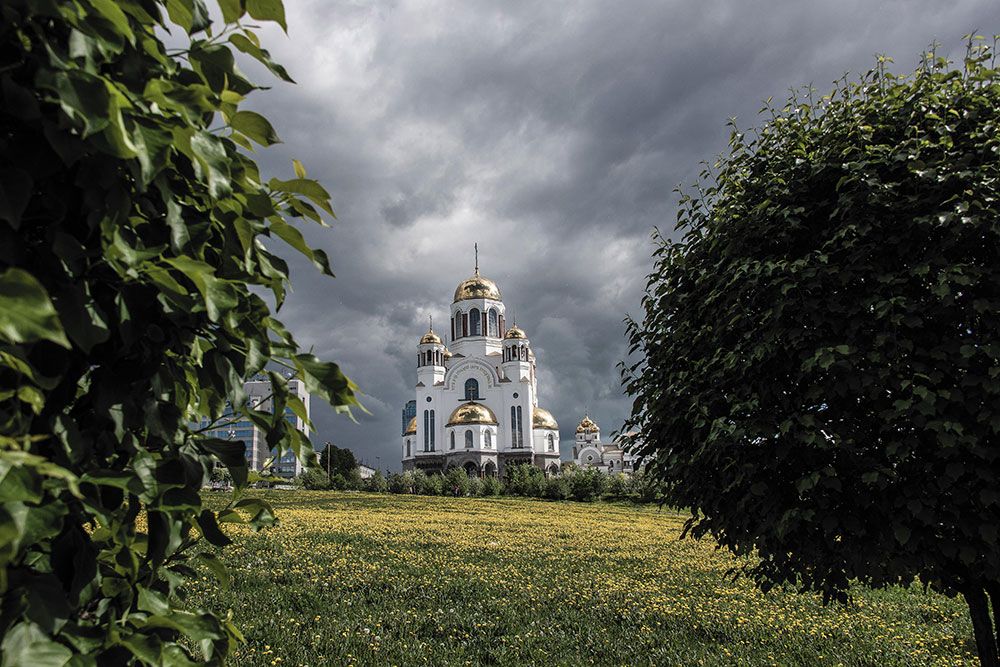
Viewed from a distance, the church provides a strong addition to the city’s skyline, a radiance in white and gold. The name of the street that the church is on—Karl Liebknecht Street—has not been changed since Soviet times. Liebknecht, a leader of the German Social-Democratic Labor Party, was killed by right-wing militia after participating in a Communist uprising in Berlin in 1919. Thus history makes its juxtapositions: A church in memory of sanctified royal martyrs gilds a street named for a martyr of international Communism.
Because I wanted to see other local sites associated with the Romanov murders—the place where the bodies were doused with acid and burned, and the swampy lane where they were buried—Alexei obligingly brought me to them, overlooking the gloominess and even creepiness of my quest. The first place, known as Ganyna Yama, is now a monastery and complex of churches and pathways in a forest outside the city. The tall firs and birches stood distinct and quiet, and deep snow overhung the church roofs. A granite marker quoted a biblical verse, from Amos 2:1—
Thus says the Lord:
“For three transgressions of Moab, and for four, I will not revoke the punishment, because he burned to lime the bones of the King of Edom.”
The story is that a bookmark in Nicholas’ Bible indicated these as the last verses he happened to read on the night that he was murdered.
Many people come to pay homage to Nicholas and his family, walking single file on the paths in the snow, their steaming breath visible as they cross themselves and light candles and pray in the unheated churches. A factotum of the monastery seized on Thomas and me as Americans and introduced us to the Metropolit, the head of the Orthodox Church in the region, who was at Ganyna Yama that morning. The high priest wore a black cassock and dark-rimmed glasses and he had a mustache and a large gray-black beard. Taking my hand in both of his he focused on me for a moment his powerful, incense-scented aura of kindness and sanctity.
The Romanovs’ burial site is out in the woods and next to some railroad tracks. A more nondescript location cannot be imagined. It was marked with several small obelisks; a blue-and-yellow banner that said “Video Surveillance in Progress” hung from ropes in the birch trees. The bodies themselves are no longer there. In 1998, the family’s remains were reinterred, and those of Nicholas and Alexandra are now entombed with his forebears in the Peter and Paul Fortress in St. Petersburg.
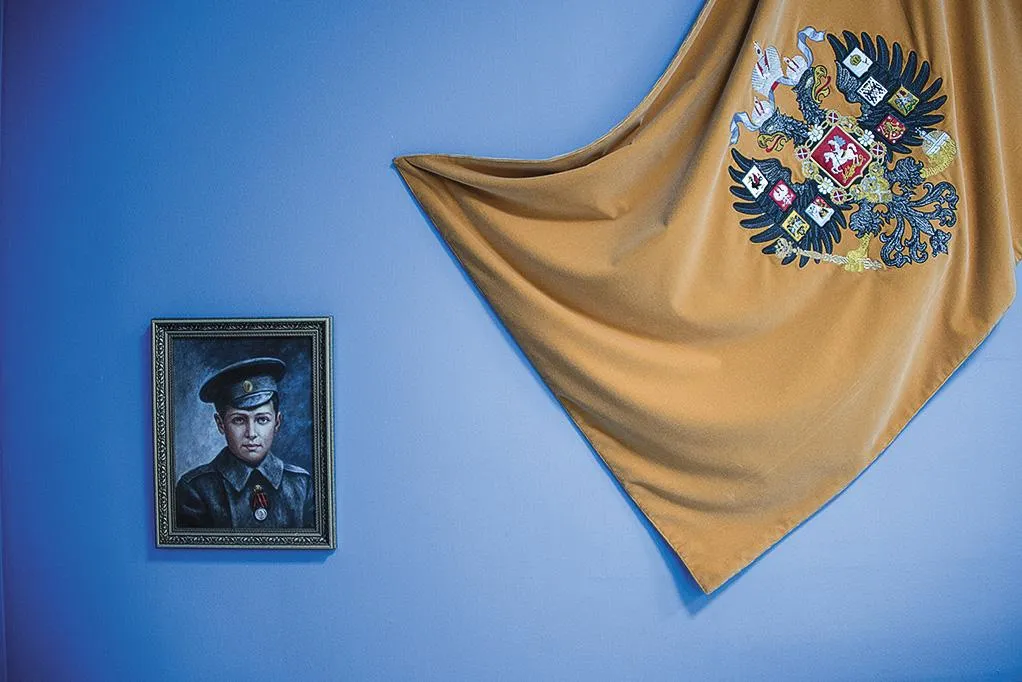
**********
In addition to exploring Yekaterinburg with Thomas, and meeting Olesya’s mother and grandmother and two sisters, and admiring how well Thomas speaks Russian, my main occupation was visiting the Boris Yeltsin Presidential Center, which includes a museum. I spent whole afternoons there.
Yeltsin came from a village near Yekaterinburg. The museum, overlooking the Iset River, is the country’s first presidential museum, in honor of the Russian Federation’s first freely elected president. It features a wide-screen film explaining Russian history in semi-realistic motion-capture animation that ends with Yeltsin defying the Generals’ Putsch in 1991—an attempted coup by hardline Communist Party leaders who opposed the Soviet Union’s accelerating reforms. The movie portrays his triumph as the beginning of a new and ongoing era of Russian freedom. Other exhibits then take you through Yeltsin’s whole career and its successes and defeats up to his eventual resignation in favor of Vladimir Putin, his then mild-seeming protégé. The overall impression is of Yeltsin’s bravery, love of country and basic humanity fading to weakness after a heart attack in 1996.
In fact, most Russians regard the Yeltsin years as miserable ones. Remembering the food shortages, lack of services, plundering of public wealth, and international humiliations of the 1990s and early 2000s, more than 90 percent of Russians, according to some opinion surveys, view Yeltsin unfavorably. Video interviews with people who feel this way round out the museum’s picture of him. Some interviewees say they consider the museum itself an insult to Russians who lived through those times. Here the museum impressed me with its candor. But the Russian sense of history often shifts like sand. A Yeltsin-centered view de-emphasizes the century’s earlier upheavals. The museum made only brief mention of 1917, and it will have no special exhibit to celebrate the revolution.
If you could somehow go back in time and tell this to the Soviet citizens of 1967, none would believe you. They would expect that such an important new museum—as well as every museum and municipality in the country—would devote itself on a vast scale to the jubilee. In 1967, the half-centennial was a huge deal not only in Russia but around the world. On April 16, 1967, ten thousand people (according to Soviet sources) re-enacted Lenin’s return to the Finland Station; some even wore period costumes. In May, 2,000 Soviet mountaineers climbed Mount Elbrus, in the Caucasus, and placed busts of Lenin at the top. Anticipating the half-centennial’s high point, 6,500 couples applied to have their marriages performed in Moscow on the eve of November 7. Babies born in that year were named Revolutsia.
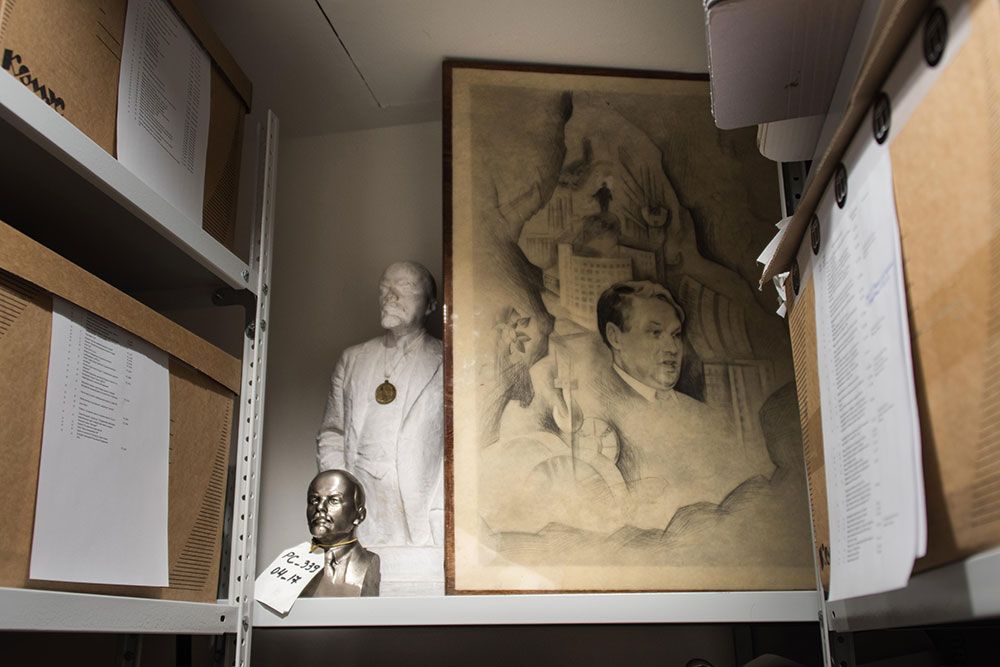
The commemorative celebrations in Moscow and Leningrad rated front-page coverage in the United States. Over-the-top extravaganzas went on for days. Only a few flaws showed in the facade. Other Communist nations sent representatives—with the exception of Albania and of China, which did not approve of Brezhnev’s policies of peaceful coexistence. Cuba sent only low-level officials because Castro had been wanting to overthrow some Latin American governments and Brezhnev wouldn’t let him. Ho Chi Minh, worrying about offending either China or Russia, also stayed away, but he did contribute a special gift: a piece of a recently shot down American jet.
Reporters asked Alexander Kerensky to comment on the historic milestone. Having escaped the Bolsheviks via the northern port of Murmansk, the former Provisional Government prime minister now lived on the Upper East Side of Manhattan. At 86 he had only recently stopped taking regular walks around the Central Park Reservoir. Few of his contemporaries of ’17 had been so lucky. Almost none of the original Bolsheviks whom the jubilee might have honored still survived; Stalin, or time, had done away with the others. John Reed had died of typhus in Moscow in 1920, before he turned 33. Lenin very much admired his book and gave it what today would be called a blurb. Reed received a state funeral, and was buried in the Kremlin Wall.
The Times’ Harrison Salisbury, reporting from Russia, noted a certain lack of enthusiasm about the half-centennial. He interviewed a lot of young Soviets who couldn’t seem to get excited about anything except jazz. In 1967 observers said that you could see the number “50” all over Russia—on posters and signs and fences and product labels. There was a 50th anniversary beer. You could buy a kind of kielbasa that, when cut into, revealed the number “50” formed in fat in each slice. I figured that somewhere in my 2017 travels I had to run into a sign with “100” on it for the centennial. Finally, in a metro station, I spotted it—the number “100” on a poster down the platform. But when I got closer I saw that it was an advertisement for a concert celebrating the 100th anniversary of the birth of Ella Fitzgerald. Perhaps Salisbury had a prophetic streak.
This November, instead of glorifying the Centennial Jubilee of the Great October Revolution, Russia will observe a holiday called the Day of People’s Unity, also called National Unity Day. It commemorates a popular uprising that drove Polish occupiers from Moscow in 1613, at the end of a period of strife known as the Time of Troubles. That victory led directly to the founding of the Romanov dynasty. The Day of People’s Unity had existed as a holiday until the Bolsheviks got rid of it. Before Putin reinstituted it in 2005, none of the Russians I know had ever heard of it.
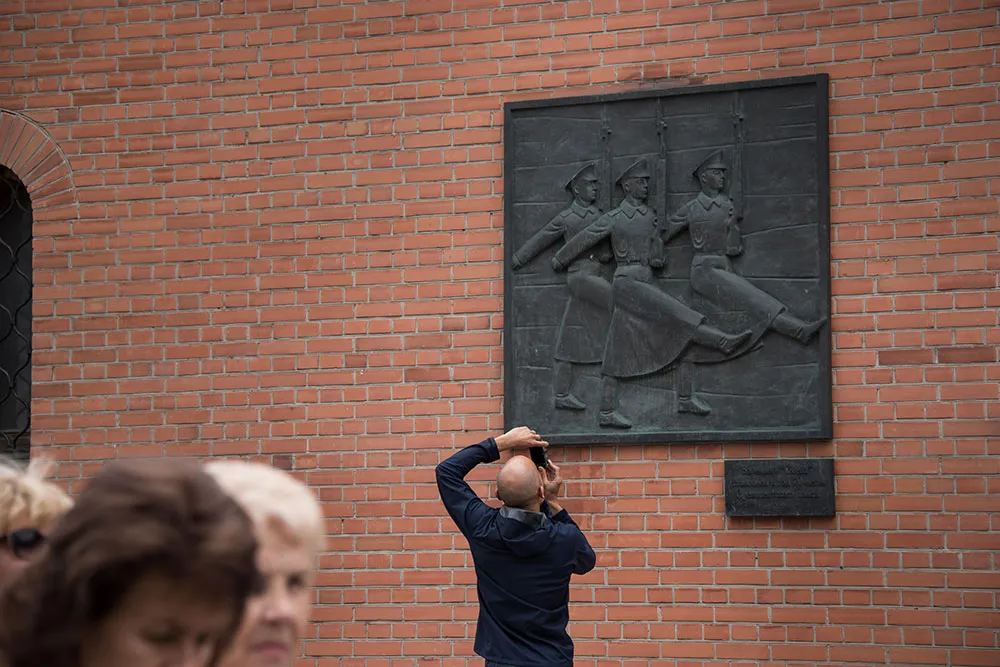
As the current president of the Russian Federation, Putin has good reason not to be crazy about the idea of revolution. The example of, say, the civil unrest of early February 1917 may not appeal to a leader who faced widespread protests against his own autocratic rule in 2011, as well as earlier this year. When speaking about the centennial, Putin has made gestures toward “reconciliation” and “consolidating the social and political unanimity that we have managed to reach today.” The supposed unanimity he referred to, of course, reflects favorably on himself.
When I talked to Boris Kolonitsky, the professor of Russian history, I asked him what his fellow citizens thought about the centennial and what the revolution means for them today. “You have to remember that adults in Russia have their own experience of civil disturbance, they have seen a coup and an attempted coup,” he told me. “After the generals’ coup against Gorbachev, when he was removed from power in ’91, we saw Yeltsin defy the conspirators and overcome them. When he stood on top of the tank addressing the crowd in front of the White House”—then Russia’s new Parliament building—“that image was a clear quotation of a famous romantic image from the Russian Revolution: Lenin on the armored car at Finland Station.
“Yeltsin’s victory was the beginning of a period of relative democracy,” he went on. “Expectations were high. But everyone also remembers the rest of the ’90s, the years that followed, which were quite terrible. Therefore we became less excited about romantic images of revolution. Two years after Yeltsin stood on the tank, he ordered tanks to fire at the Parliament building, to resolve the constitutional crisis brought on by those trying to overthrow him. As Putin himself said, ‘In Russia we have over-fulfilled our plans in revolutions.’
“Now an important value in Russia is peace,” Kolonitsky continued. “Stability also—and therefore revolution loses its appeal. I think the country will observe the centennial with reflection and discussion, but without celebration.”
5
The oldest person I know was born before the Bolsheviks changed Russia to the Gregorian calendar. Lyudmila Borisovna Chyernaya came into the world on December 13, 1917—after the Bolshevik coup, and a week before the founding of the Cheka. This December she will celebrate her 100th birthday. Lyudmila Borisovna (the polite form of address is to use both the first name and patronymic) is the mother of my longtime friend, the artist Alex Melamid. I first met her 24 years ago when Alex and his wife, Katya, and I stayed in her apartment on my first trip to Russia. Last March I made a detour to Moscow, to see her again.
For my visit to her apartment one Saturday afternoon I brought along my friend Ksenia Golubich, whom I got to know when she translated for me at a Russian book fair in 2013. Lyudmila Borisovna shows almost no disabilities of age. In 2015, she published a much-praised memoir, Kosoi Dozhd (or Slanting Rain). Now she is working on a sequel. She talks quickly and in long, typographical paragraphs. I was glad I had Ksenia to help me keep up. On the wall of the apartment are paintings by Alex, and portraits of her late husband, Daniil Elfimovich Melamid, an author, professor and expert on Germany. She showed us photographs of her great-grandchildren, Lucy and Leonard, who are 5 and 2 and live in Brooklyn. They come to Moscow to visit her because at almost 100 years old she can no longer travel easily to America.
Lyudmila Borisovna was born in Moscow. Her parents had moved here, in 1914, to a pleasant, small apartment with five rooms on a classic Moscow courtyard. They were educated people; her mother was one of the first women admitted to a university in Russia and later translated all of Stalin’s speeches into German for TASS, the Soviet international news agency. Lyudmila Borisovna first experienced the revolution, indirectly, at the age of 3 or 4; she had to give up her own room, the nursery, when their apartment became communal and two Communists moved in. Later more new residents took over other rooms, but her parents did not mind, because they believed in the revolution and wanted to do their part.
Lyudmila Borisovna had a distinguished career as a journalist, author, translator and German-language counter-propagandist on the radio during the Second World War. Her husband, Daniil Elfimovich, was head of the counterpropaganda agency; she monitored broadcasts from Germany and refuted them in broadcasts of her own. Because of these, she was called “the Witch of the Kremlin” by Goebbels himself. Her discourse to us contained not very many pauses into which Ksenia could insert translation. In one of the pauses, returning to the subject of the revolution, I asked her if she thought it had been for the good. “Yes, it was exciting for us to have people coming to Moscow from all over the world to learn about Communism,” she said. “The revolution made Moscow important to the world.”
She seemed eager for us to have lunch. Lena, her live-in helper, who is from Ukraine, brought out dish after dish that she had made herself—borscht, cabbage pies, mushroom pies, several different kinds of fish, salads, beef tongue; then strong Chinese tea, very large chocolates and an immense banana torte with cream frosting. Ksenia had to concentrate to continue translating as she and I ate and Lyudmila Borisovna watched us, beaming. Afterward I received an email from Alex: “I got a report from mama of your and your translator’s gargantuan appetites and the amount of food you both consumed. She was proud of her feeding prowess.” He added that shortage of food had been one of his mother’s main worries throughout her life.
I asked Lyudmila Borisovna what she considered the single highest point of the last 100 years. “March 5, 1953,” she answered, immediately. “The happiest day of my life—the day Stalin died. All the Stalin years were bad, but for us the years 1945 to 1953 were very hard. After his death the country started to become better, more free. Today life in Russia is not wonderful, but it’s fairly good. People may complain, but I tell you from experience that it can get much worse than this.”
At the door she helped us into our coats and bid us goodbye, with special regards to Ksenia, whom she had taken to. I’m of average height but as we stood there I realized I’m at least a head taller than she is. She smiled at us, her blueish-gray eyes vivid, but neither warm nor cold. In them I got a glimpse of the character one needs in order to live through such a time, and for 100 years.
**********
On my first Moscow visit, the man who drove Alex and Katya and me around the city was a wry and mournful fellow named Stas. He had a serviceable, small Russian sedan, not new, that he maintained carefully. One day he couldn’t drive us because the car needed repairs. When he showed up again I asked him how his car was doing now. “Is an old man ever well?” Stas replied. At Lyudmila Borisovna’s, when I was having trouble dialing her phone, she corrected me. “He likes to be dialed slowly,” she said. When people showed me examples of Moscow architecture, the buildings usually possessed a person’s name indicating their particular era. Instead of saying, “That’s a Khrushchev-era building,” my guides said, “That’s Khrushchev. That’s Stalin. That’s Brezhnev.” When I asked what the Russian for “speed bump” is, I was told it’s lezhashchii politseiskii, which means “lying-down policeman.” When a noise thumped in an apartment we were visiting, our hosts explained to me that it was the domovoi, the resident spirit of the apartment. Every house or apartment has a domovoi.
An ancient enchantment holds Russia under its spell. Here all kinds of things and creatures are seen to be sentient and capable of odd transmigrations. In Yekaterinburg my son, while doing some babysitting for a friend, had this conversation:
Six-year-old boy: “What are you?”
Thomas: “I’m an American.”
Boy: “Why are you an American?”
Thomas: “I don’t know. Because I come from America.”
Boy: “Can you speak English?”
Thomas: “Yes.”
Boy: (after some thought): “Can you talk to wild animals?”
The question is no less than reasonable in Russia, where even the doors in the most elegant room in the Winter Palace have the feet of birds.
Russia, the country itself, inhabits a spirit as well. The visible location of this spirit’s existence in the world used to be the czar. The United States is a concept; Russia is an animate being. I think Nicholas II understood this, and it’s why he believed so strongly that his countrymen needed the autocracy. Nicholas not only ruled Russia, he not only signified Russia, he was Russia.
The month after the murders of Nicholas and his family an assassin shot Lenin twice as he came out of an event. One of the wounds almost killed him. When, after a perilous period, he recovered, many Russians started to regard him with mystical devotion. In order to stay in power Lenin had prostrated Russia before Germany with the Treaty of Brest-Litovsk, by which Russia renounced claims on vast amounts of territory including the Baltic states, Poland and Ukraine. When Germany lost the war, and Russia got back all it had conceded, he began to look like a military-political genius, too. Before his early death, from a series of strokes, in 1924, the person of Lenin had become interchangeable with revolutionary Russia, just as the czars had been Russia before the revolution. In a way Lenin’s physical death made no difference, because his body could be preserved indefinitely in a glass tomb in Red Square for all citizens to see. As the words of a Communist anthem put it, Lenin, yeshcho zhivoi! “Lenin, living still!”
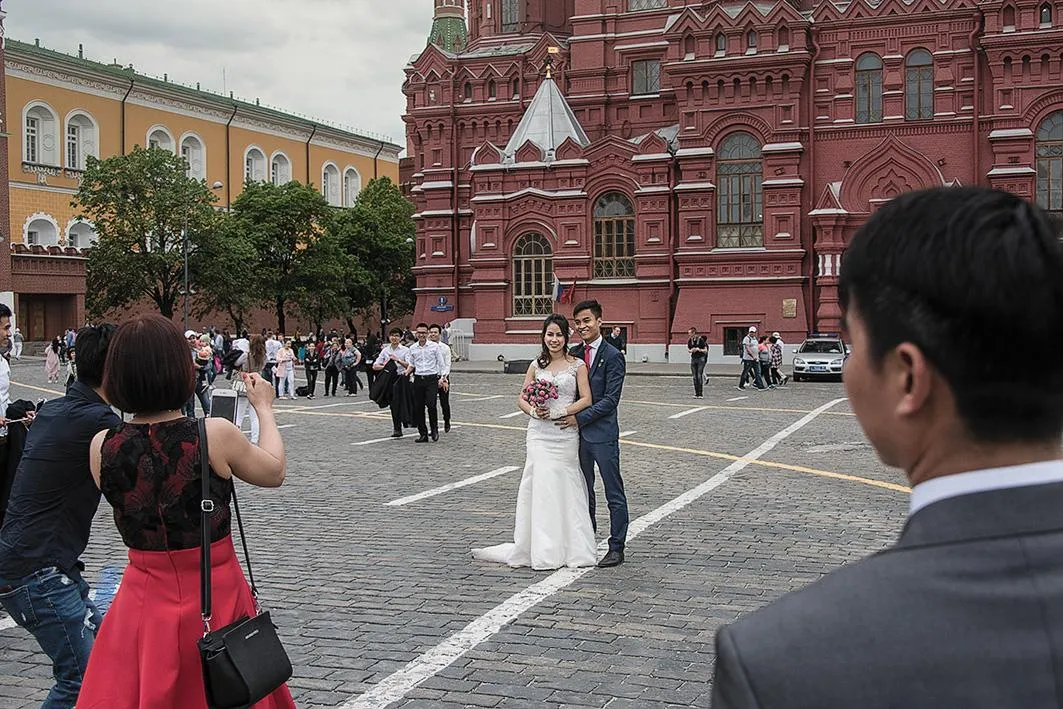
One annual celebration the country loves is Dien Pobeda, Victory Day, celebrated on May 9, the day of the German surrender in 1945. The Victory Day parade used to feature the predictable huge portraits of leaders, but for the past ten years its focus has been on the common soldiers who fought in the war. Today, on Victory Day, marchers show up in the hundreds of thousands in every major Russian city bearing portraits of their relatives who served. These portraits, typically black-and-white photographs, keep to a single size and are attached to identical wooden handles like those used for picket signs. As a group the photos are called Bezsmertnii Polk, the Deathless Regiment.
The portraits in their endless numbers evoke powerful emotions as they stream by, especially when you glimpse a young marcher who looks exactly like the young soldier in the faded photograph he or she is carrying. I attended the parade in Moscow in 2016, and as I watched the missiles and tanks that always have accompanied it, I wondered where the traditional giant portraits of The Leader had gone. As under the Soviets, Russia today is governed by what amounts to one-party rule, and again its leadership is more or less an autocracy. But inhabiting the role of Russia itself, as the czars used to do, is a demanding task. Lenin solved the problem by being dead for most of his tenure. Yeltsin made a brave start, standing on the tank, but as he admitted when he turned his power over to Putin in 1999, he got tired. And Putin seems to understand that huge images of the leader’s mug look corny and old-fashioned today.
Which is not to say that Putin’s mug is not everywhere. It’s a common sight on our screens—today’s public forum—as well as in such demotic venues as the tight T-shirts featuring his kick-ass caricature that the muscular, pale, crew-cut guys who multiply on Russian streets in summer all seem to wear. As an autocrat whose self coincides with Russia, Putin has grown into the job. Taking off his own shirt for photographers was a good move: Here is the very torso of Russia, in all its buff physicality.
But Putin also impersonates a Russia for an ironic age, letting us know he gets the joke, playing James Bond villain and real-life villain simultaneously, having his lines down pat. After being accused of ordering the murder of Alexander Litvinenko, a former FSB agent turned whistle-blower who was poisoned by a radioactive substance in London, Putin denied involvement. Then he added, “The people who have done this are not God. And Mr. Litvinenko, unfortunately, is not Lazarus.”
Barring major unforeseen changes, Putin will be re-elected in 2018, and initiate Russia’s transmogrified, resilient autocracy into its next 100 years.
*
Problems left unsolved take their own course. The river in flood cuts an oxbow, the overfull dam gives way. The Russian Revolution started as a network of cracks that suddenly broke open in a massive rush. Drastic Russian failures had been mounting—the question of how to divide the land among the people who worked it, the inadequacy of a clumsy autocracy to deal with a fast-growing industrial society, the wretched conditions of hundreds of thousands of rural-born workers who had packed into bad housing in Petrograd and other industrial cities, to name a few. But nobody predicted the shape that the cataclysm would take.
The speed and strength of the revolution that began in February of 1917 surprised even the Bolsheviks, and they hurried to batten onto its power before it ran away from them. An early sense of unexpectedness and improvisation gave the February Revolution its joyful spirit. Russians had always acted communally, perhaps because everybody had to work together to make the most of the short Russian growing season. This cultural tendency produced little soviets in the factories and barracks, which came together in a big Soviet in Petrograd; and suddenly The People, stomped-down for centuries, emerged as a living entity.
One simple lesson of the revolution might be that if a situation looks as if it can’t go on, it won’t. Imbalance seeks balance. By this logic, climate change will likely continue along the path it seems headed for. And a world in which the richest eight people control as much wealth as 3.6 billion of their global co-inhabitants (half the human race) will probably see a readjustment. The populist movements now gaining momentum around the world, however localized or distinct, may signal a beginning of a bigger process.
When you have a few leaders to choose from you get sick of them eventually and want to throw them out. And when you have just one leader of ultimate importance in your whole field of vision—in Russia, the czar—the irritation becomes acute.
So, enough! Let’s think about ordinary folks for a change: That was the message of Lenin’s too-long pants, of the Bolsheviks’ leather chauffeur coats and workers’ caps, and of all Socialist Realist paintings. But it takes a certain discipline to think about People in general. The mind craves specifics, and in time you go back to thinking about individuals. As Stalin supposedly said, “One person’s death is a tragedy, but the death of a million people is a statistic.” Czar Nicholas II was sainted not for being a martyr but for being an individual, suffering person you can relate to. It’s remarkable that Russia cares about the Romanovs again, having once discarded them so casually. Thousands of pilgrims come to Yekaterinburg every year to pray at the sites of the royal family’s murder and subsequent indignities. Dina Sorokina, the young director of the Yeltsin Museum, told me that as far as she knows they don’t also visit her museum when they’re in town.
The worldwide Socialist revolution that the Bolsheviks predicted within months of their takeover proved a disappointment. In fact, no other country immediately followed Russia’s lead. During Stalin’s time the goal changed to “Building Socialism in One Country”—that is, in Russia. Other countries eventually did go through their own revolutions, and of those, China’s made by far the largest addition to the number of people under Communist rule. This remains the most significant long-term result of Lenin’s dream of global proletarian uprising.
Fifty years after the Russian Revolution, one-third of the world’s population lived under some version of Communism. That number has shrunk significantly, as one formerly Communist state after another converted to a market-based economy; today even Cuba welcomes capitalist enterprises from America. The supposed onward march of Communism, so frightening to America in the ’60s—first Vietnam, then all of Southeast Asia, then somehow my own hometown in Ohio—scares nobody nowadays.
But if Russia no longer exports international Socialism, it has not stopped involving itself in other countries’ internal affairs. Which is not to suggest that other countries, including us, don’t sometimes do the same. But by turning the state’s secret and coercive forces actively outward, the Bolsheviks invented something new under the sun for Russia. It has found exporting mischief to be a great relief—and, evidently, a point of strategy, and of pride. On the street in Yekaterinburg, an older woman, recognizing Thomas and me as Americans, cackled with great glee. “Americans!” she called out. “Trump won! We chose him!” In June, James Comey, the former director of the FBI, testifying before Congress, said, “We’re talking about a foreign government that, using technical intrusion, lots of other methods, tried to shape the way we think, we vote, we act. That is a big deal.” The habit of Russian intrusion that Comey is talking about began at the revolution.
Individuals change history. There would be no St. Petersburg without Peter the Great and no United States of America without George Washington. There would have been no Soviet Union without Lenin. Today he might feel discouraged to see the failure of his Marxist utopia—a failure so thorough that no country is likely to try it again soon. But his political methods may be his real legacy.
Unlike Marxism-Leninism, Lenin’s tactics enjoy excellent health today. In a capitalist Russia, Putin favors his friends, holds power closely and doesn’t compromise with rivals. In America, too, we’ve reached a point in our politics where the strictest partisanship rules. Steve Bannon, the head of the right-wing media organization Breitbart News, who went on to be an adviser to the president, told a reporter in 2013, “I’m a Leninist...I want to bring everything crashing down, and destroy today’s establishment.” Of course he didn’t mean he admired Lenin’s ideology—far from it—but Lenin’s methods have a powerfully modern appeal. Lenin showed the world how well not compromising can work. A response to that revolutionary innovation of his has yet to be figured out.
Travels in Siberia
In this astonishing new work from one of our greatest and most entertaining storytellers, Ian Frazier trains his perceptive, generous eye on Siberia.
A Note to our Readers
Smithsonian magazine participates in affiliate link advertising programs. If you purchase an item through these links, we receive a commission.
/https://tf-cmsv2-smithsonianmag-media.s3.amazonaws.com/filer/46/0a/460a9b9f-1863-4457-9bd5-6b80ee76f68f/oct2017_b12_russianrevolution.jpg)
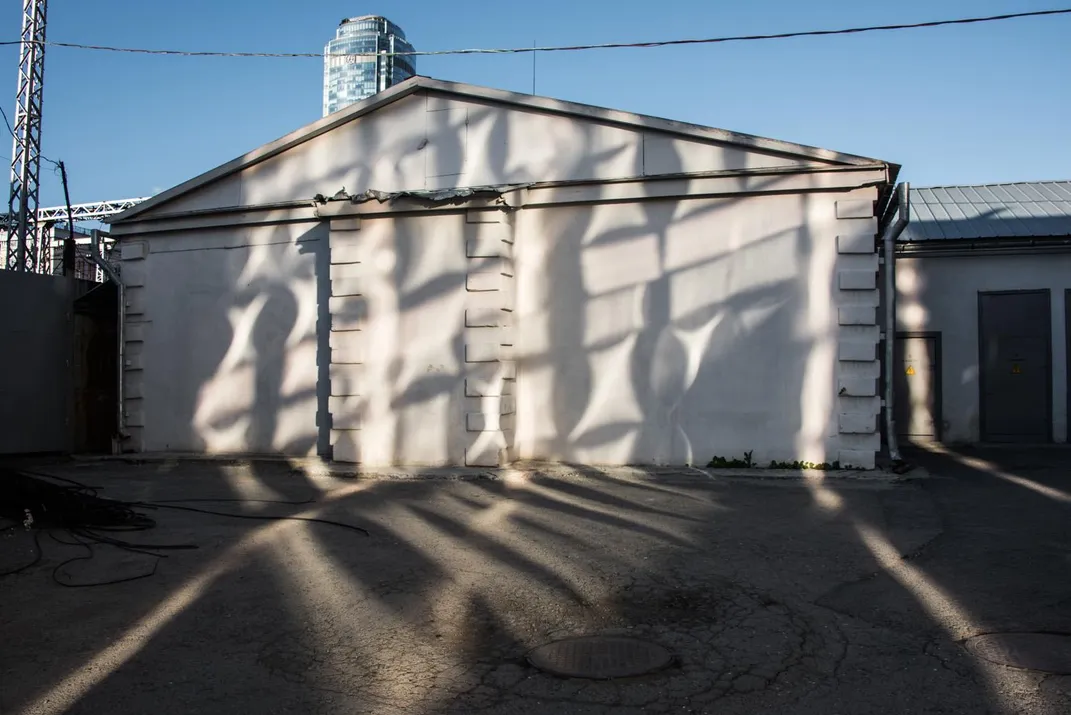
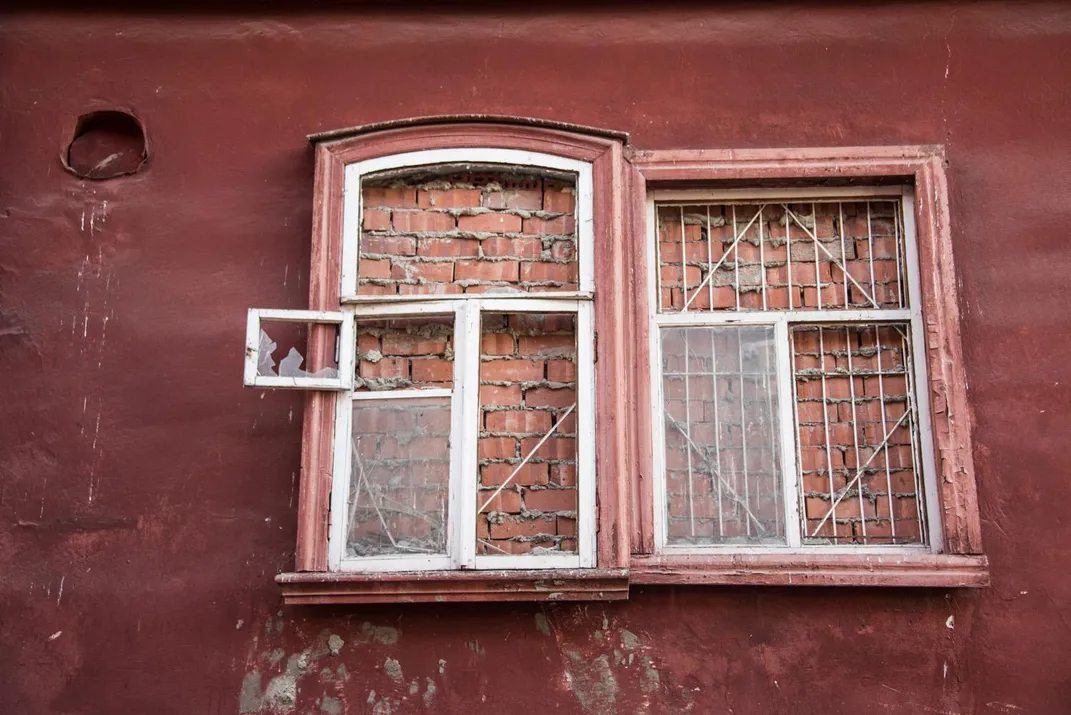
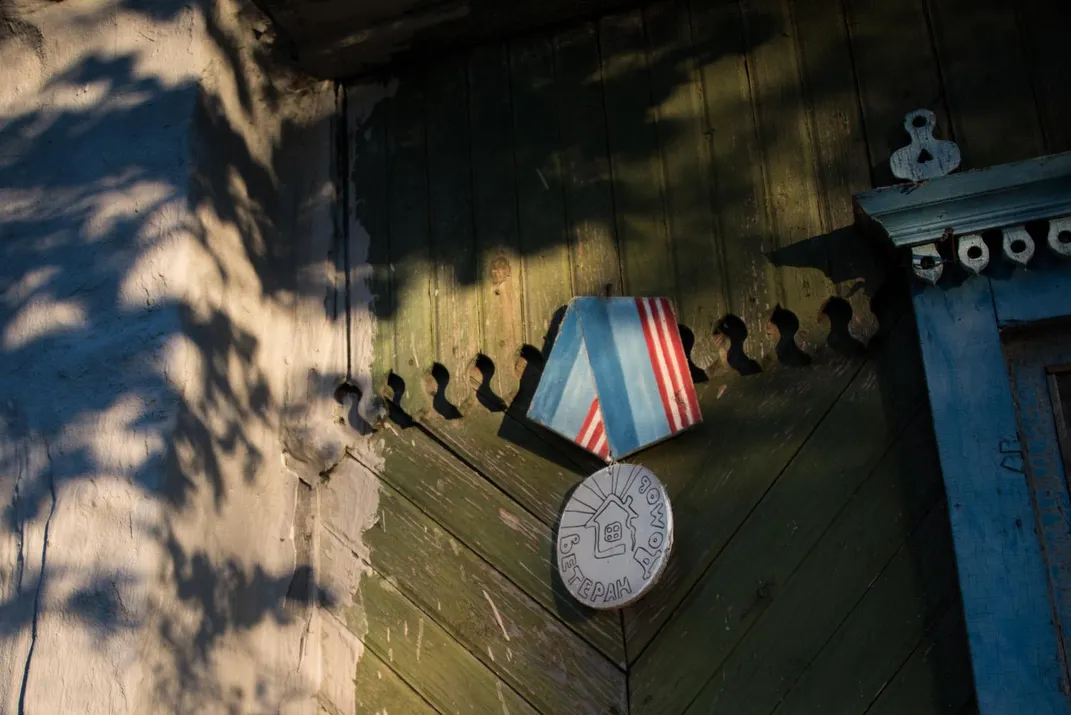
/https://tf-cmsv2-smithsonianmag-media.s3.amazonaws.com/filer/07/5e/075e8b54-0bc1-4cfb-a2b7-ed884ece8b32/oct2017_b20_russianrevolution.jpg)
